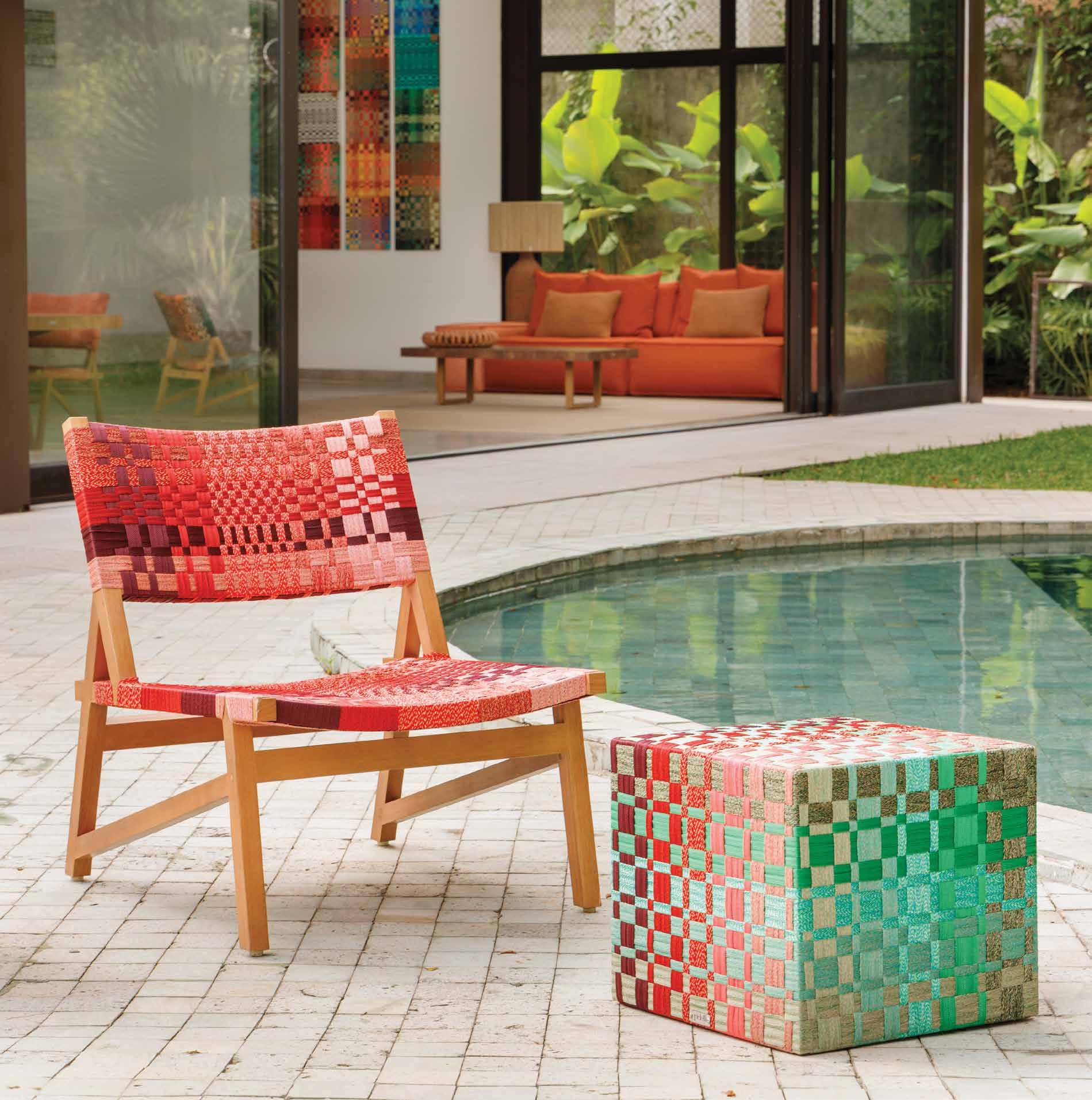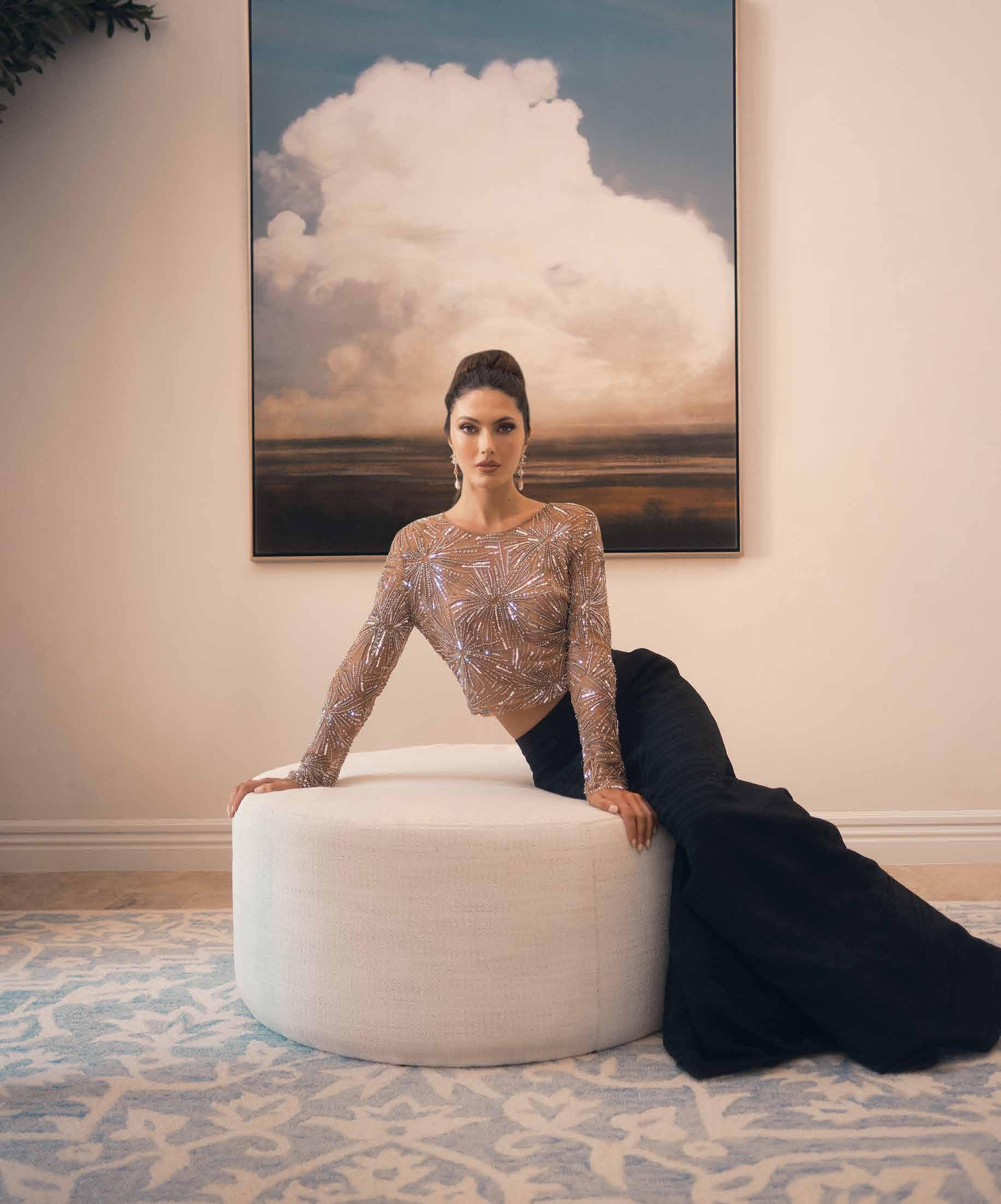
Live Beautifully
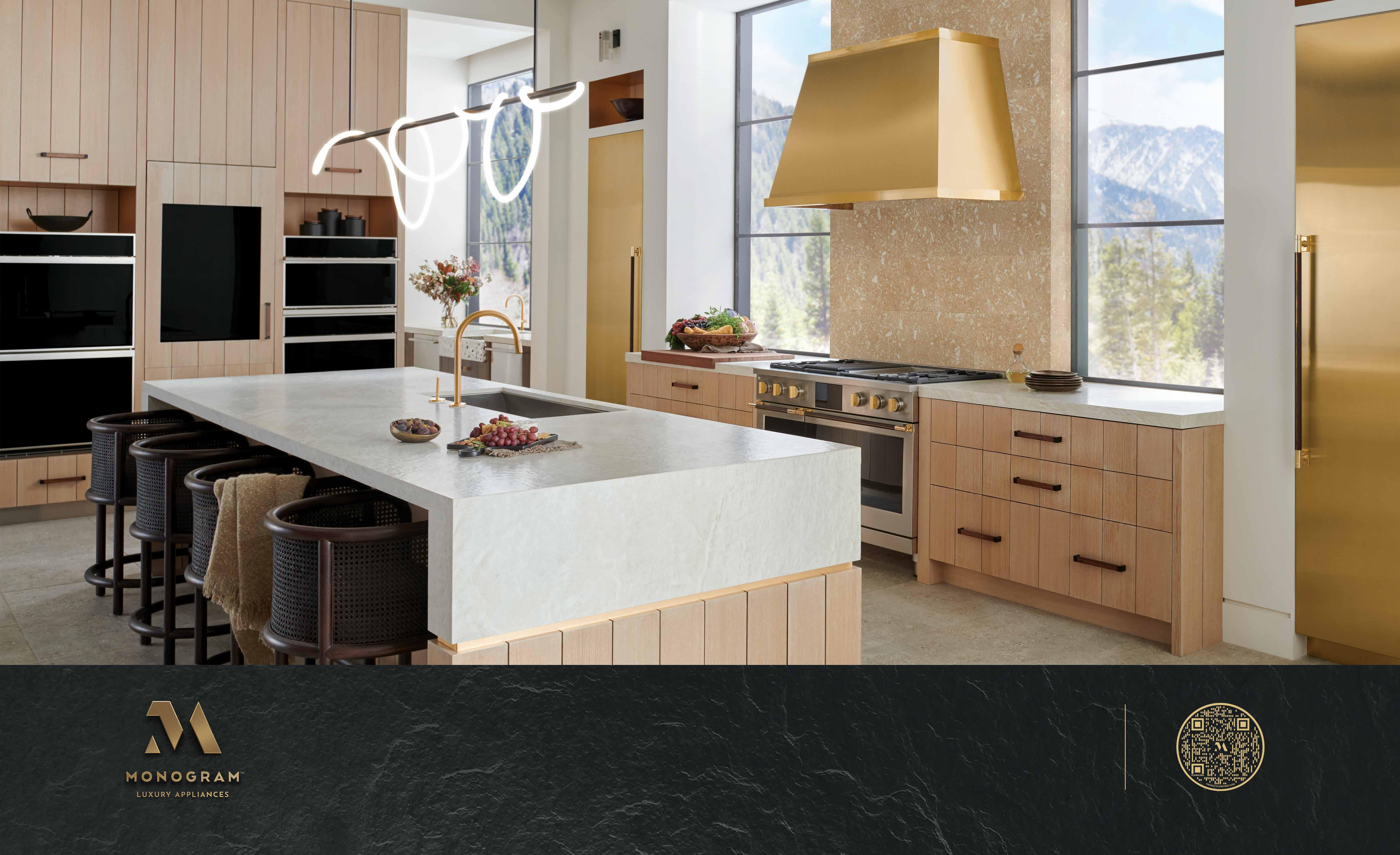














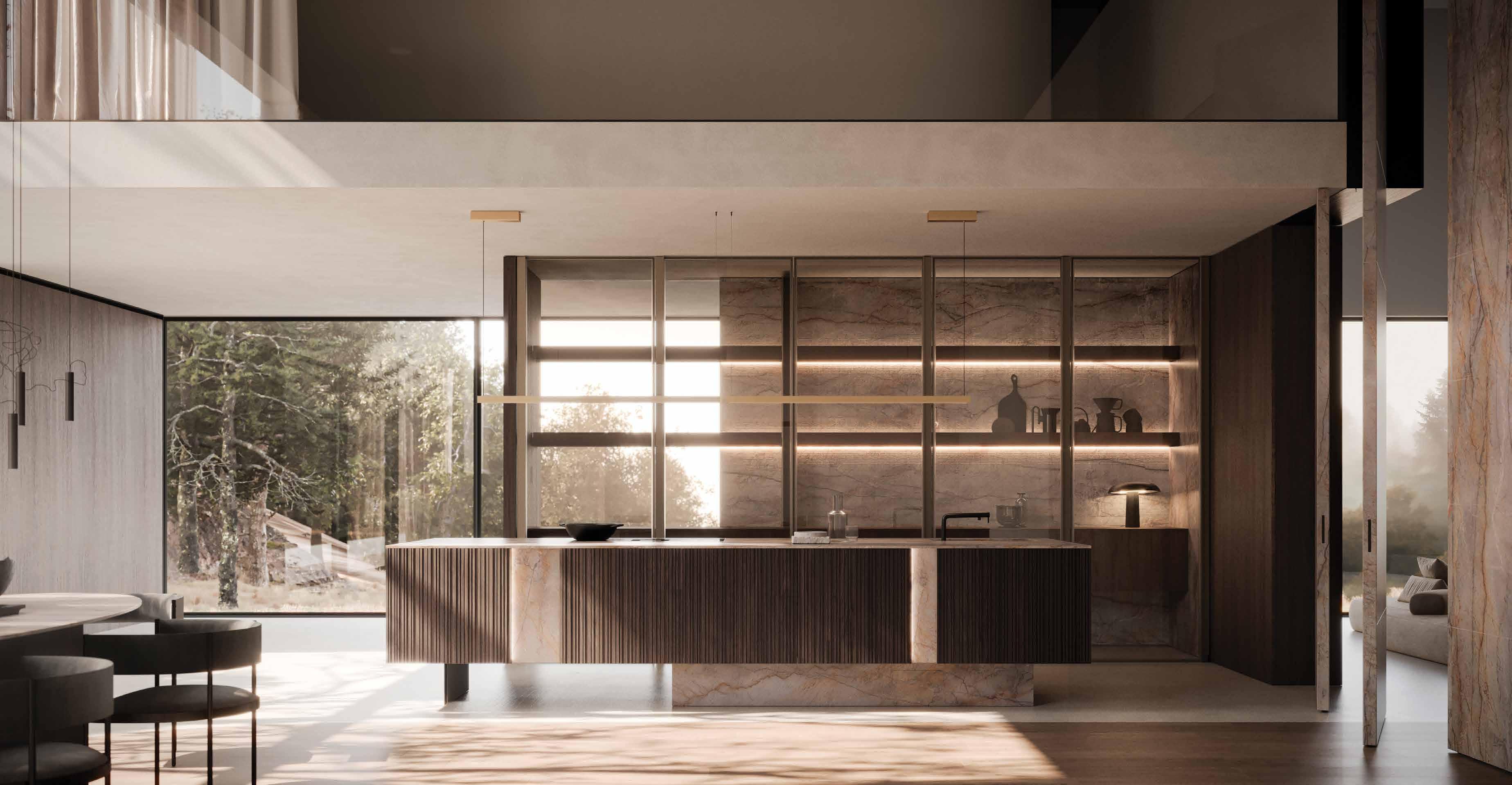



The best window and door automation system in the world opens your windows and doors effortlessly.

















































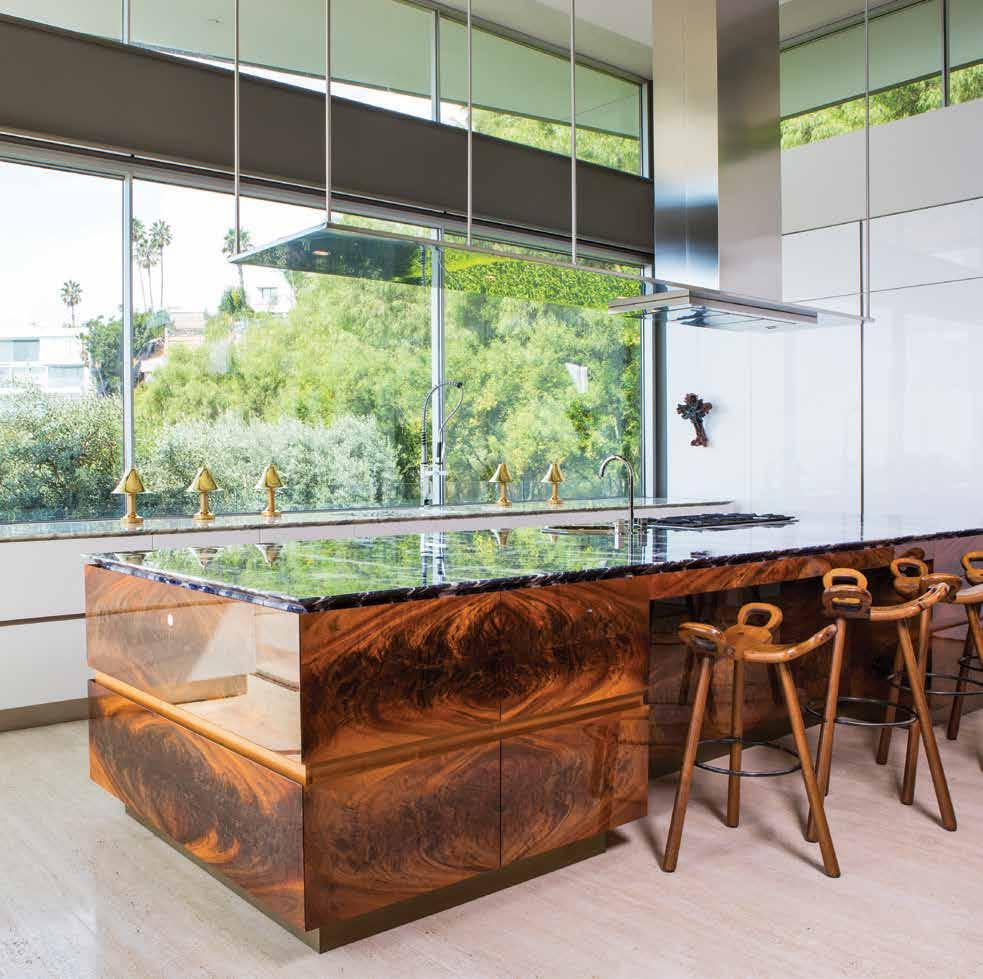







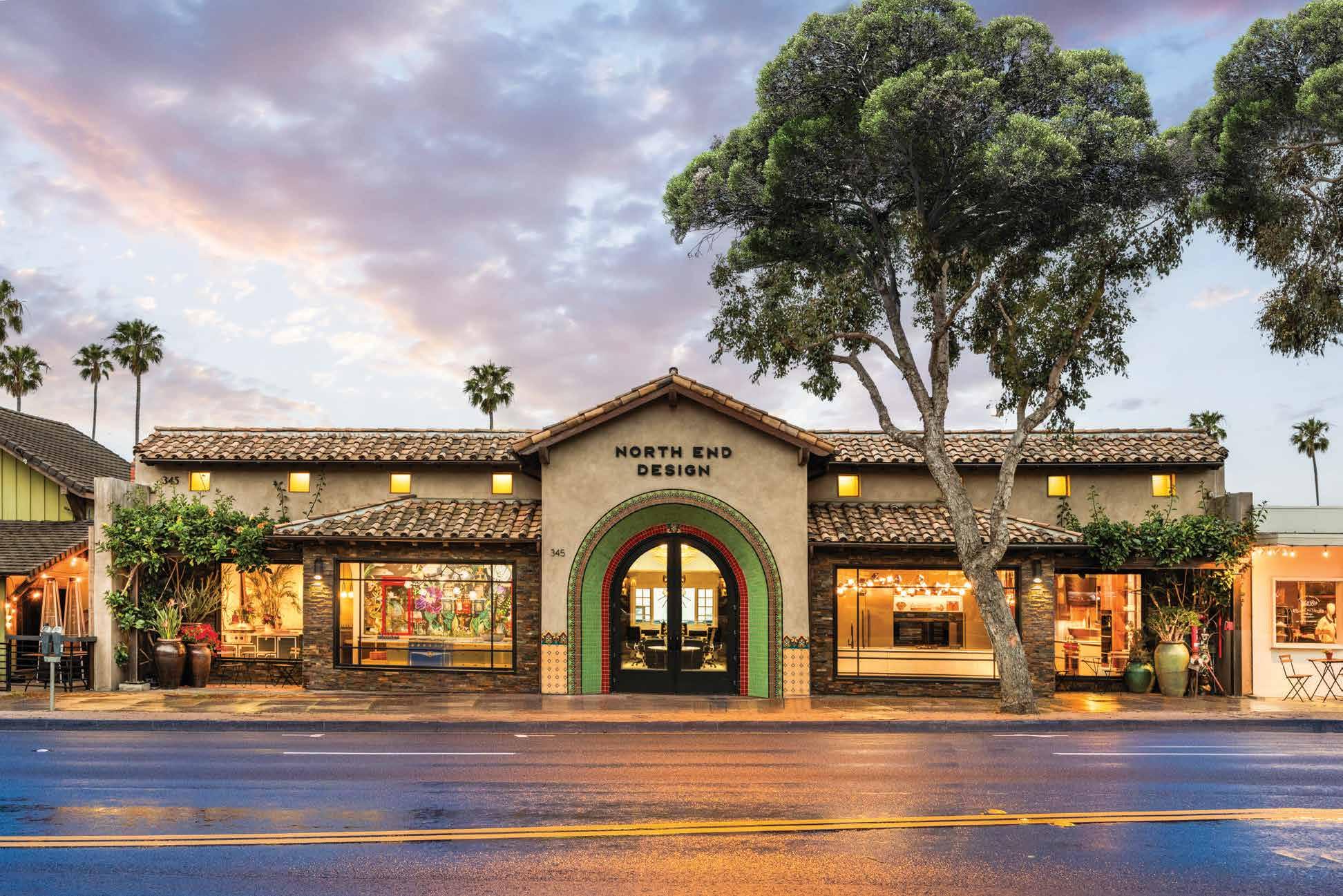
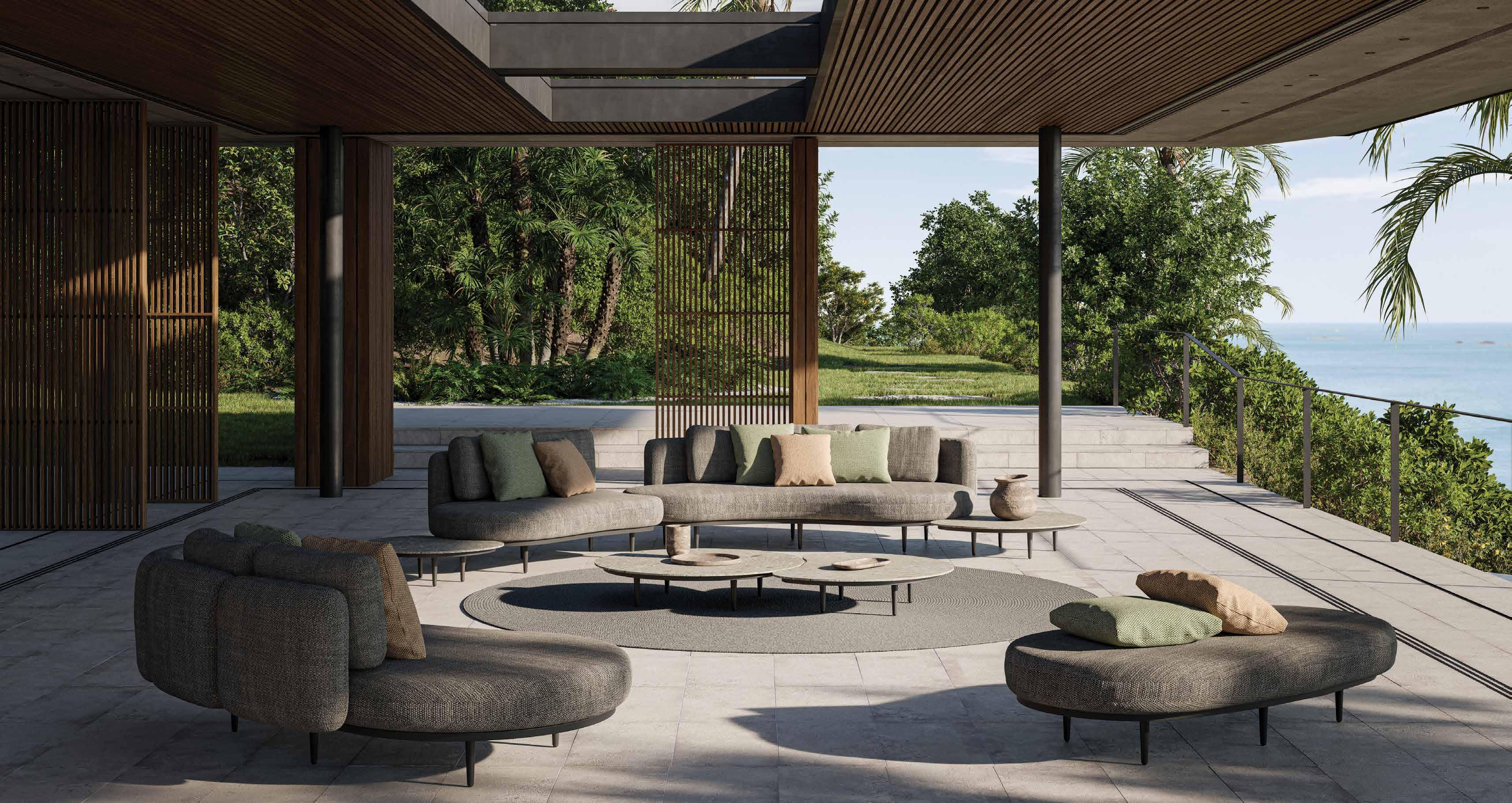




Designing Homes For Inspired Living.






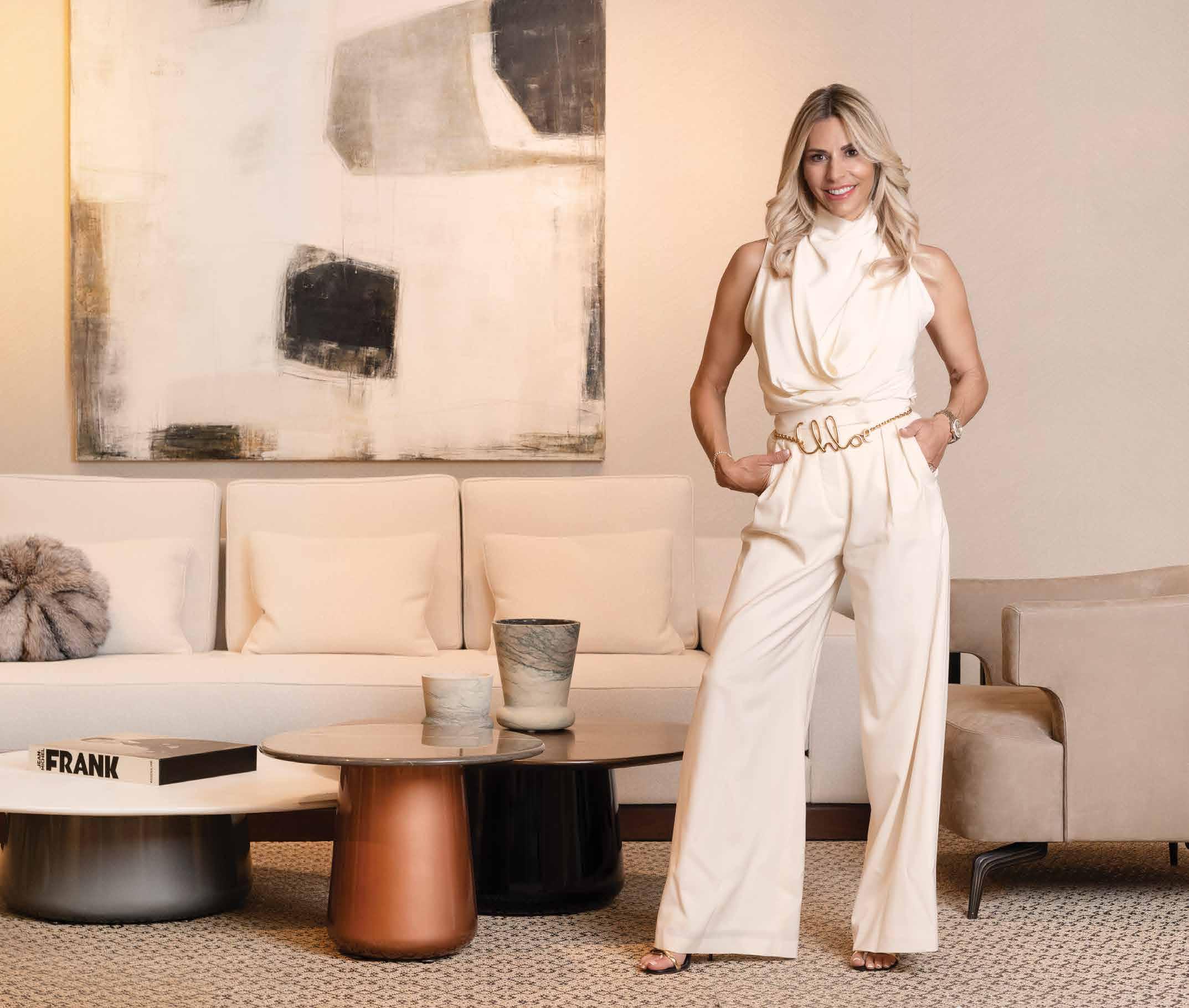













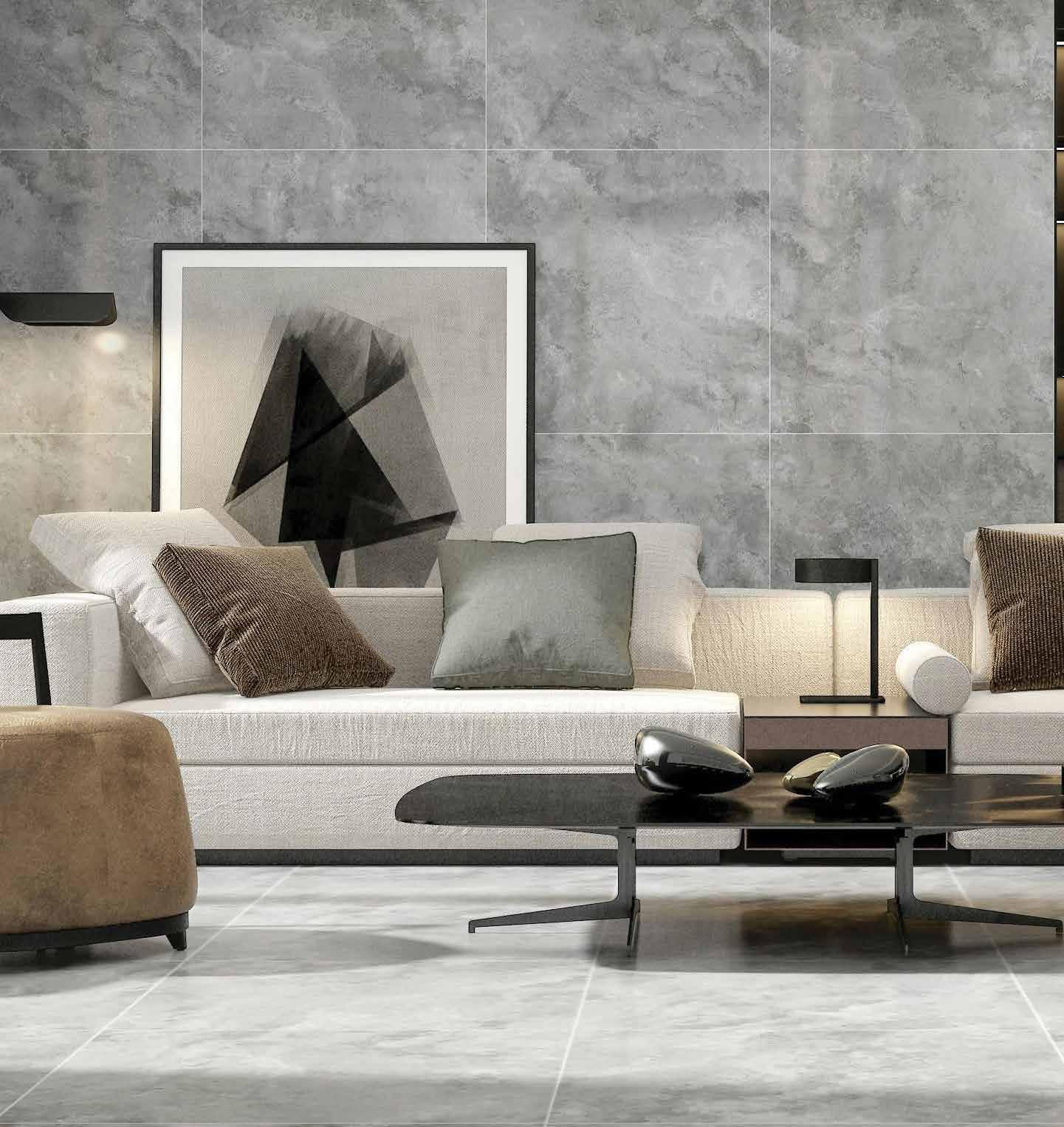






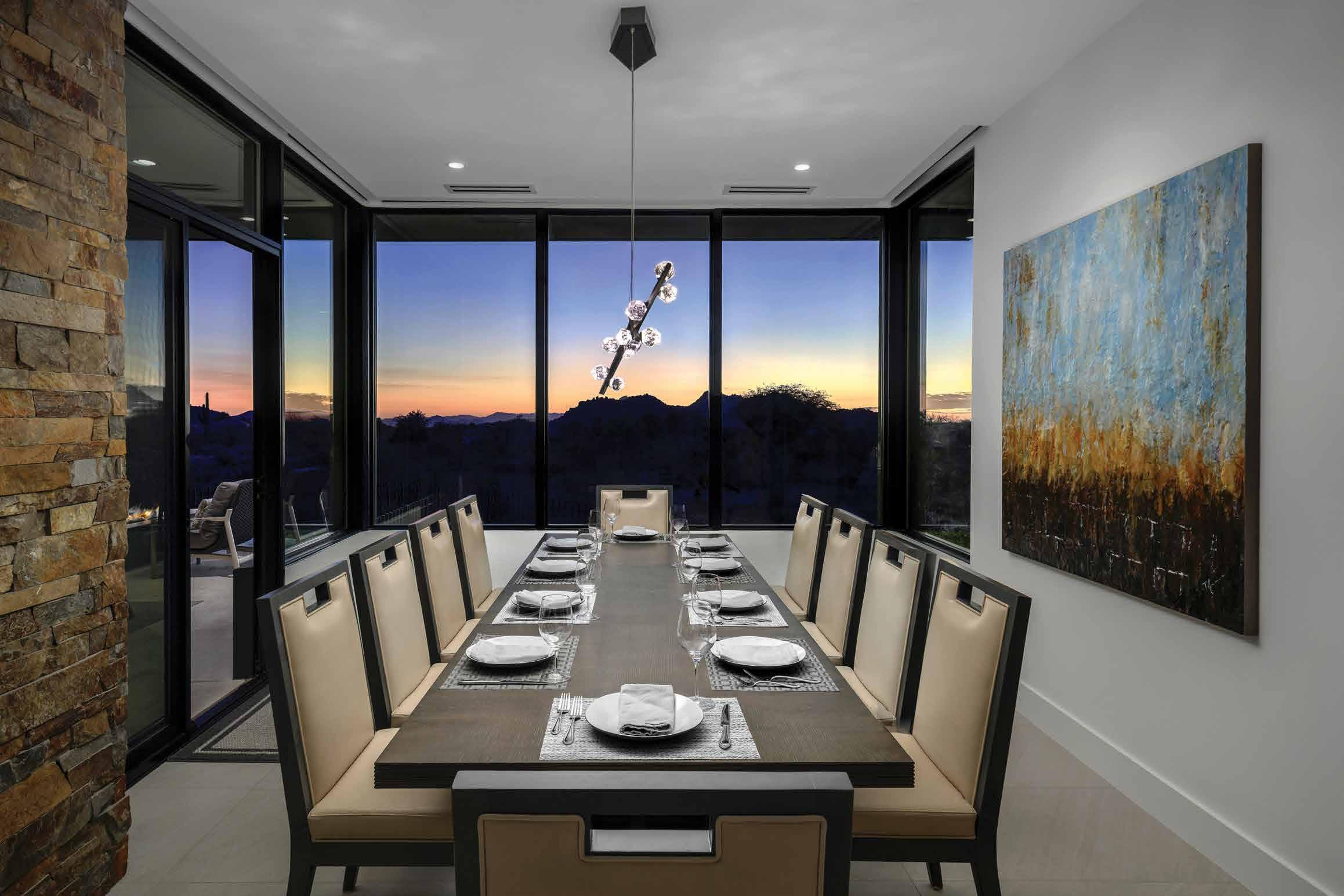







For over 30 years, Custom Comfort Mattress has handcrafted double-sided mattresses using natural materials in Southern California Each luxurious sleep solution is made for enduring, personalized comfort and whole-body wellness transforming your bedroom into an inspiring sanctuary of rejuvenating rest
Begin Your Concierge Sleep Experience Today.
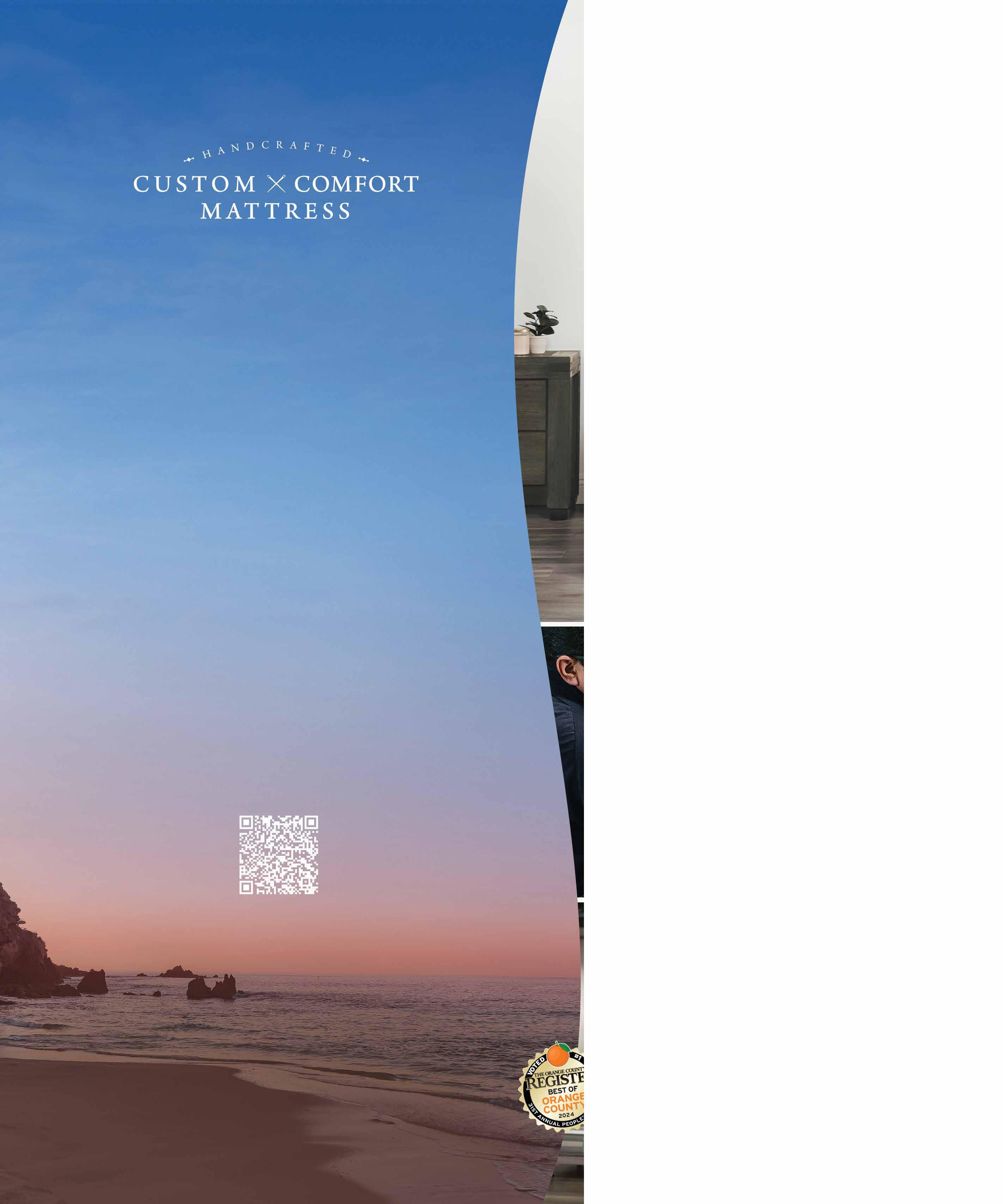



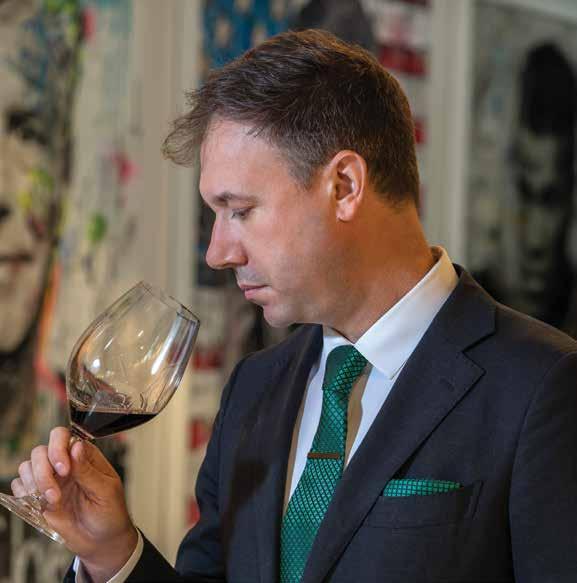

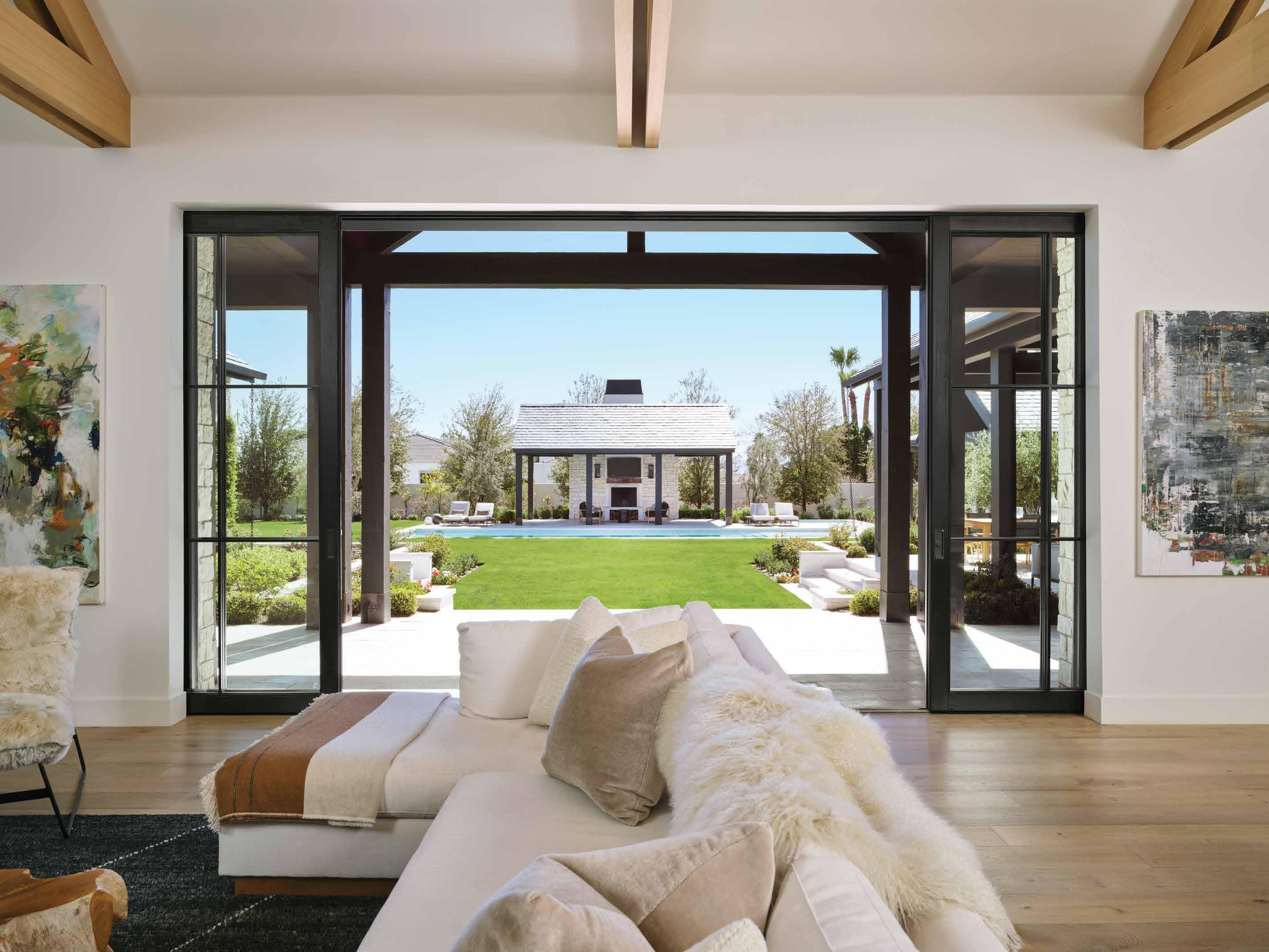

Renee M. Dee Publisher
renee@iconiclife.com
@iconiclifemag
@iconicreneedee
When it comes to creating a luxury home—whether you’re starting from the ground up or breathing new life into an existing space—a great interior designer is key to the team.
Talented designers bring more than just an eye for beauty. They bring vision, cohesion and the ability to translate your personal style into a space that feels elevated, intentional and deeply you.
In luxury living, it’s not just about finishes and furnishings—it’s about crafting a lifestyle. Designers know how to balance form and function, space and scale, light and texture. They make sense of hundreds of decisions, guide you away from costly mistakes, and ultimately, save you time, stress and money.
I’ve had the privilege of seeing the work of the designers, builders and architects we feature for almost three decades. I call it “Publisher’s Favorite Days.” Over the years, our design community has become more sophisticated and more aware of sustainability, and I am continually wowed by the innovative ideas and exquisite projects I get to experience. It brings joy and inspiration to my life!
For the last four years, we’ve named and celebrated our ICONIC LIFE Top Designers. In this issue, we celebrate three new honorees whose work has impressed our team, and their reputations are unmatched in the design community. Congratulations to Amy Meier, Jeffrey Maynard and Sheldon Harte. We are so excited to recognize you on October 22, 2025, at Walker Zanger for our Top Designer invitation-only event.
Here’s to inspired living and celebrating design, and creating a home that’s a perfect reflection of you, working with the best of the best.
With Gratitude,

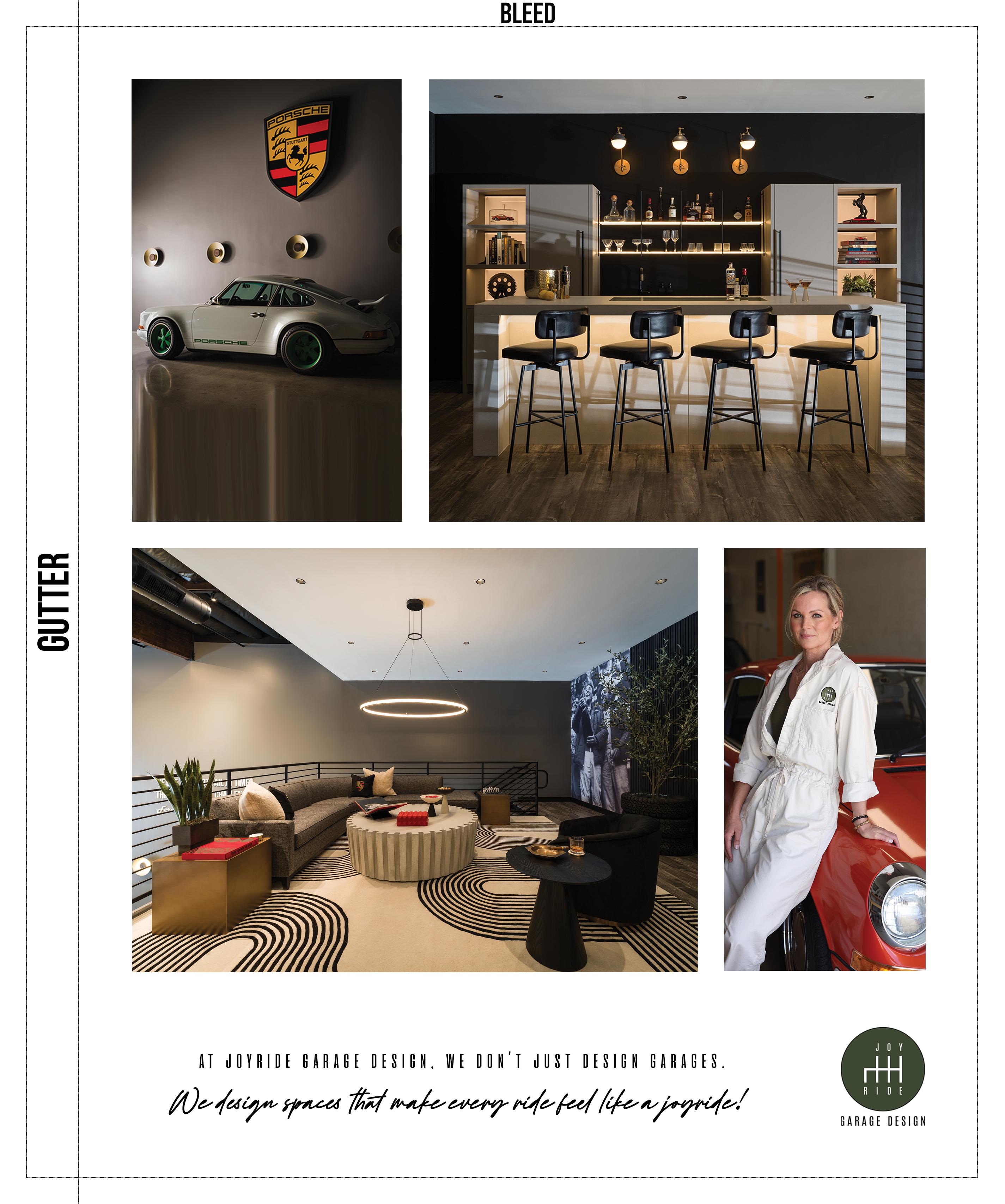



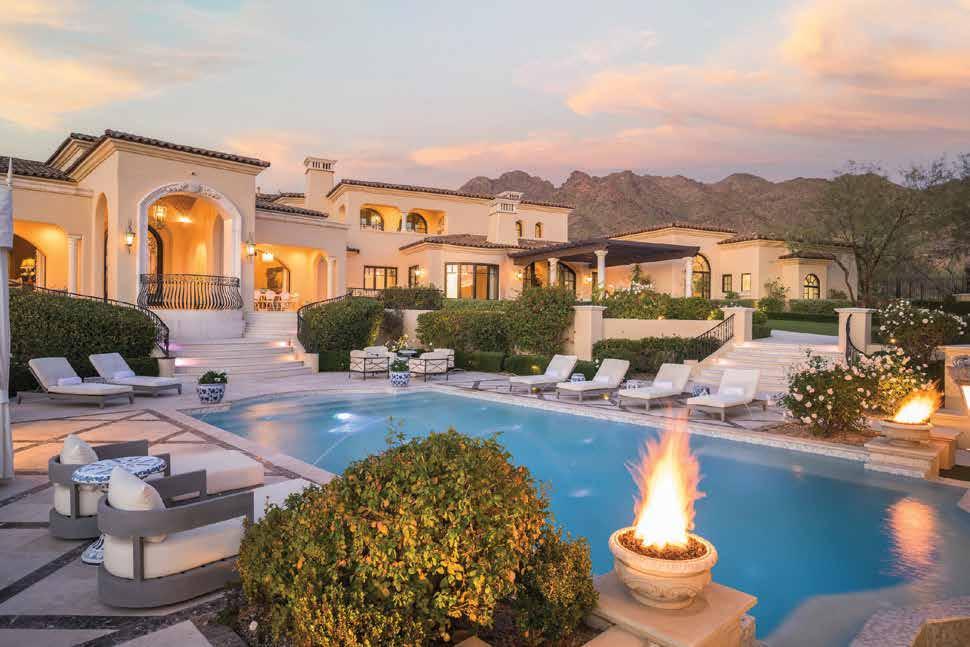




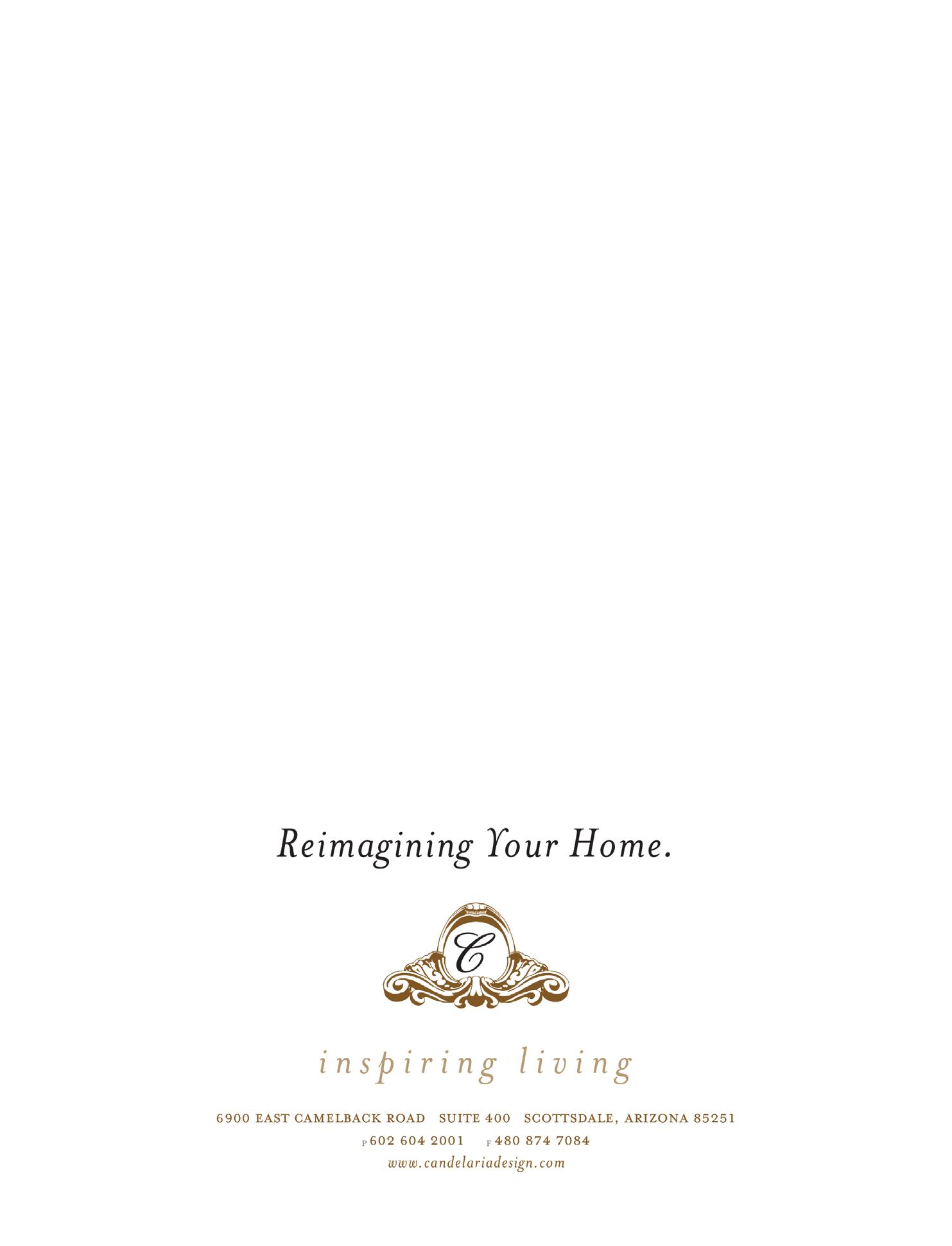



Nakayla Shakespeare Editor-in-Chief
nakayla@iconiclife.com @iconiclifemag
Ican’t believe September is upon us once again! 2025 is flying by, and with all the exciting things like our Top Designer event and the holidays dawning on us, we will be ringing in 2026 before we know it. Fall is one of my favorite seasons for many reasons, the first of which is that temperatures begin to drop, which means the fall fashion can make its way out of retirement from my closet.
Earlier this year, top fashion houses showcased their creations across runways around the globe. Top trends included the use of bold colors, rich textures and a focus on defined silhouettes. Many fashion techniques associated with the Victorian and Renaissance periods, such as high and exaggerated necklines, corsets and ruffled fabric textures, made their way to the runway once again.
Our cover was inspired by the resurgence of a distinctly defined period in fashion. The goal was to showcase the coexistence of elevated interior design and fashion, highlighting a connection between contemporary interiors and fashion.
Speaking of design, this issue also highlights the incredible work of our next group of Top Designers. The caliber of their work is absolutely unbelievable, surpassing great design and delivering extraordinary results to clients. We are so honored to have them as part of the Top Designer family. To find out who they are, please refer to page 72.
As always, I hope you enjoy this fall issue as much as I enjoyed putting it together.
Yours truly,
by






RENEE M. DEE | Publisher
NAKAYLA SHAKESPEARE | Editor-in-Chief
MEG PERICH | Associate Publisher
DOROTHY COSTELLO | Business Development Director OC
ERIN SUWWAN | Publication Designer
MADELEINE PERICH | Client Coordinator
AMALIE RHEBECK | Marketing Intern
NANCY ERDMANN | Features Editor
MARK SACRO | Cover Photographer CONTRIBUTORS
Fran Miller, David Rubin and Lindsey Wilson
Advertising and Editorial Queries, contact us at concierge@iconiclife.com 8145 E. Evans Road, Suite 7 Scottsdale, AZ 85260
480.330.3737 Subscribe NOW: ICONICLIFE.COM Follow us @iconiclifemag

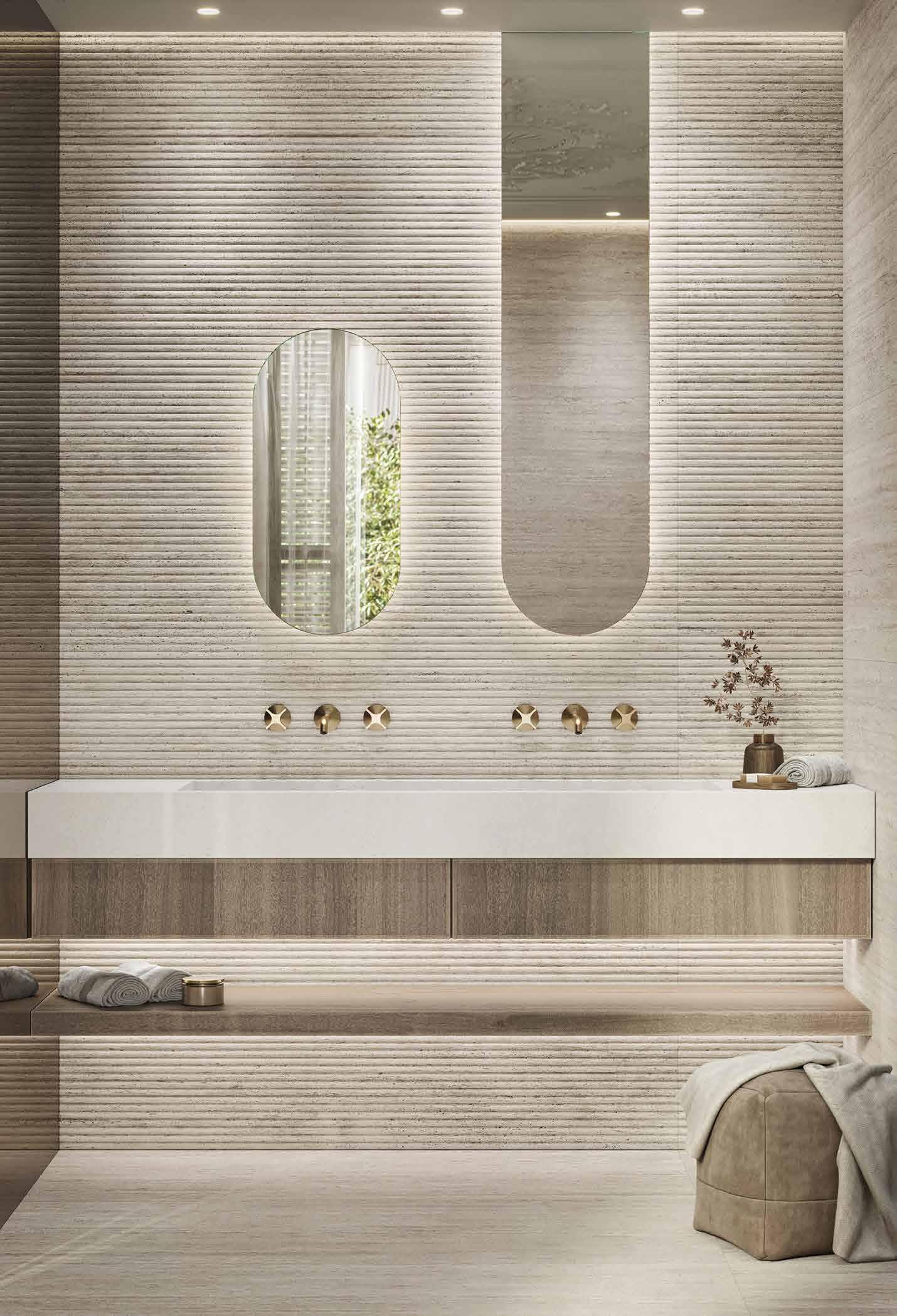




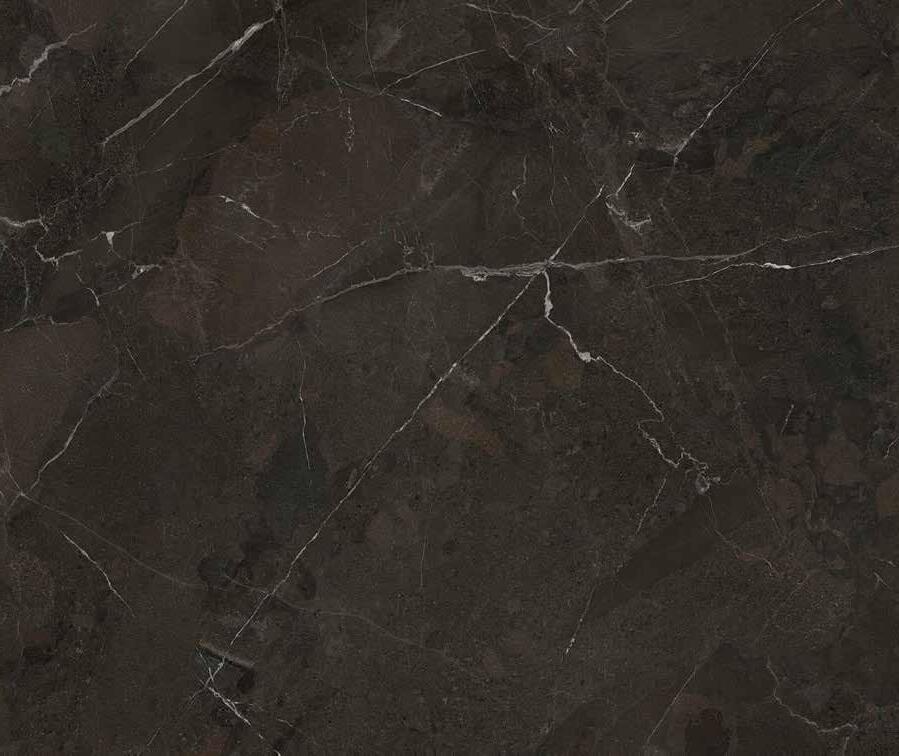
Elevate every surface with Porcelanosa. Discover Spanish innovation and timeless elegance in every detail. From sculptural kitchens to serene, spa-like baths, visit our Anaheim showroom to experience materials that turn everyday spaces into works of art.
Porcelanosa Anaheim 1301 South State College Boulevard, Suite E, Anaheim, CA 92806
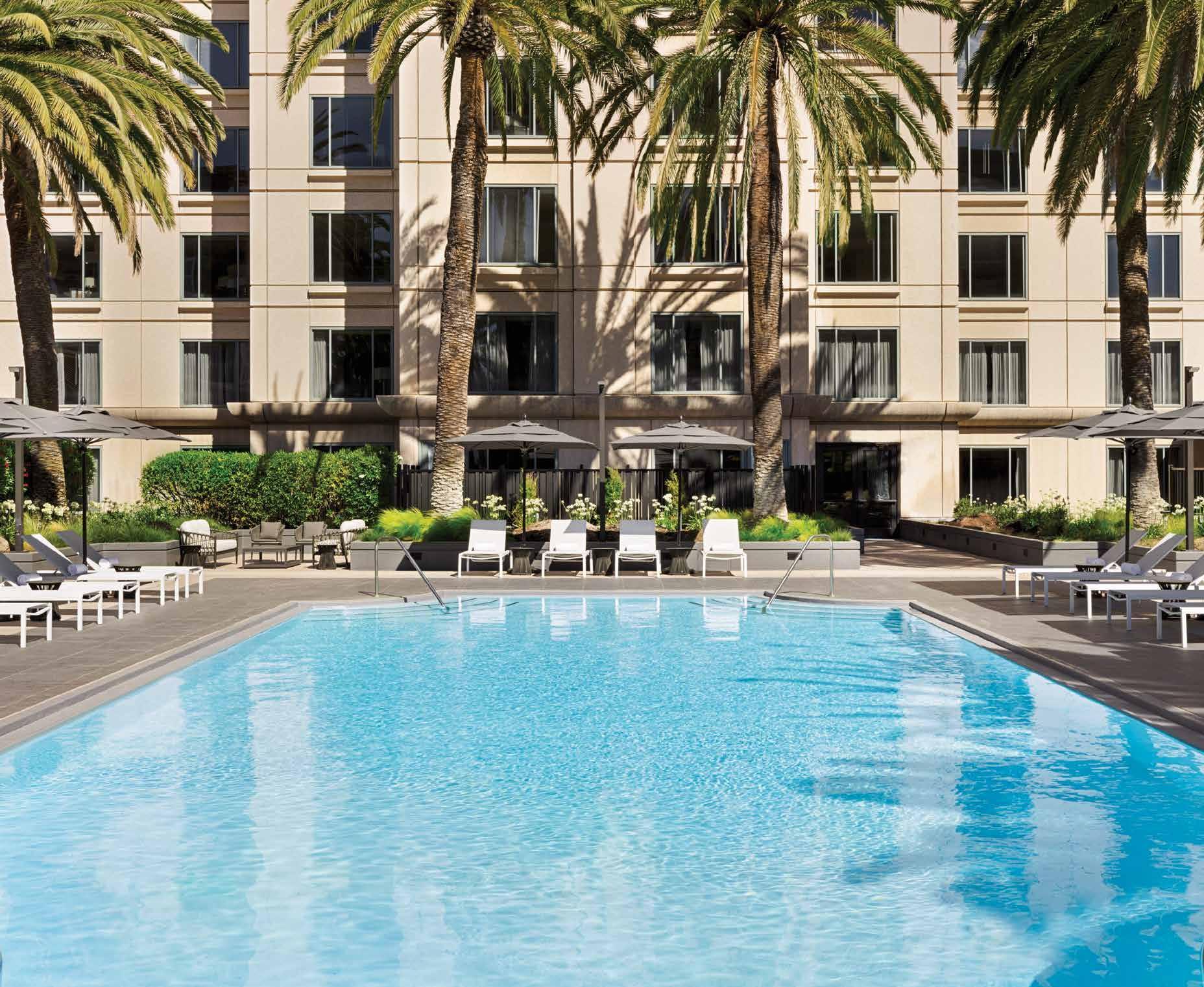
Signia by Hilton San Jose introduces a new era of hospitality that puts human connection at the heart of a reinvigorated icon. Reimagined for the modern traveler, Signia introduces delightfully personal service and a seamless sensory experience to San Jose. Discover the signature luxuries of a modern Silicon Valley oasis.




By Nakayla Shakespeare


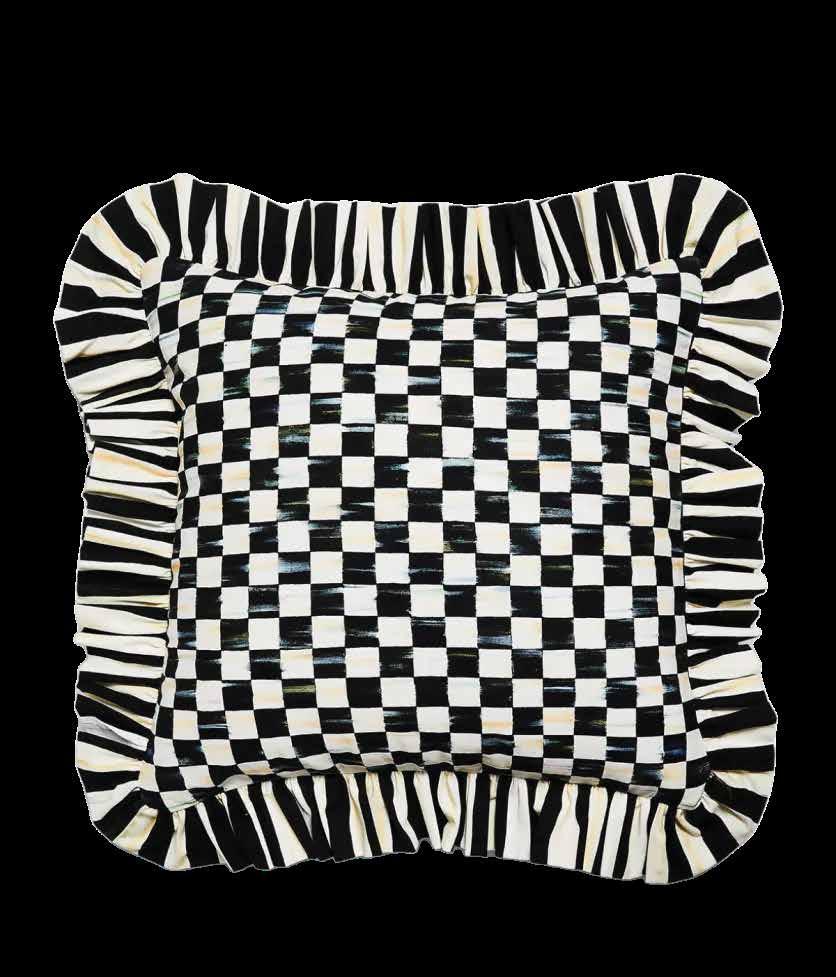

A curation of beautiful throw pillows to showcase in the home.






By Nakayla Shakespeare
Few things trump the feeling of indulging in refreshing shucked oysters sitting atop a bed of ice on a warm summer day. If you are a seafood enthusiast like me, you may notice a variation in texture, size and sometimes flavor of oysters. Still, you may not be able to identify the exact type of oyster you like on paper. Let this be your guide to all things oyster, so the next time you’re ordering this delicacy, you’ll be an expert.
GENERAL TRAITS
Shells Longer, more narrow and teardrop-shaped.
Flavor Briny, clean, crisp and often mineral-forward.
Texture Firmer and leaner due to colder waters.
NOTABLE VARIETIES
Blue Point (Long Island Sound, NY/CT)
Size Medium to large.
Flavor Mild brine with a slightly sweet finish.
Texture Meaty and dense.
Notes A crowd-pleaser; often used in raw bars.
Wellfleet (Cape Cod, MA)
Size Medium.
Flavor Bold brininess up front with a clean, vegetal finish.
Texture Crisp, plump meat.
Notes A quintessential New England oyster.
Glidden Point (Maine)
Size Large.
Flavor Deep brine, buttery mid-palate, sweet finish.
Texture Exceptionally firm.
Notes Pristine cold waters create a refined, balanced flavor.

GENERAL TRAITS
Shells Deeper cup, more rugged.
Flavor Creamy, cucumber-like, melon or lettuce notes.
Texture Soft, plump, and silky.
NOTABLE VARIETIES
Kumamoto (Originally Japan; now WA/CA)
Size Small.
Flavor Sweet, fruity, low-brine, often described as “nutty.”
Texture Creamy, custard-like.
Notes A favorite for beginners and oyster aficionados alike.
Hama Hama (Hood Canal, WA)
Size Medium.
Flavor Mildly salty with hints of cucumber and melon.
Texture Meaty but tender.
Notes Sustainably farmed and very consistent in quality.
Fanny Bay (British Columbia)
Size Medium.
Flavor Moderate brine with a sweet, mineral finish.
Texture Slightly chewy.
Notes Good balance of East and West Coast characteristics.
GENERAL TRAITS
Shells Large, thick and often irregular.
Flavor Mild brine, earthy, sometimes metallic.
Texture Soft, more delicate, less refined.
Notes Ideal for cooking—grilled, fried or in stews.
NOTABLE VARIETY
Apalachicola (Florida Panhandle)
Size Large.
Flavor Mild saltiness, with a buttery finish.
Texture Tender and soft.
Notes Known for high yields and warm-water farming.
Start briny, end sweet. Begin your tasting with high-salinity East Coasters, and finish with creamy West Coast varieties or Belons.
Chew, don’t just slurp. Chewing releases the full complexity of the oyster’s flavor.
Mind the mignonette. A light, vinegarbased sauce enhances flavor without masking it. Avoid heavy sauces when tasting premium oysters.

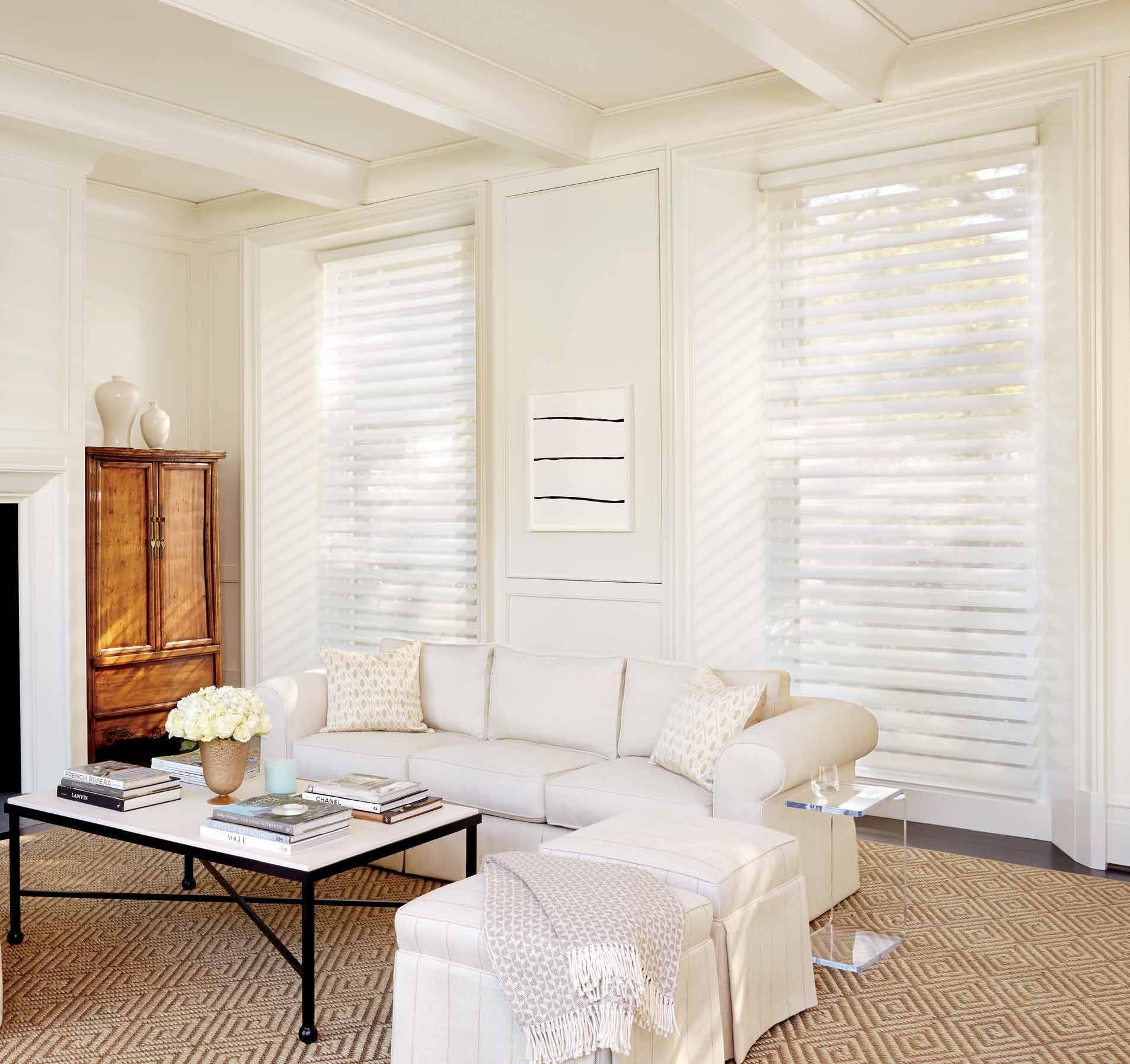





Fall in love with these fashion essentials just in time for autumn.


Cable



by John Douglas Photography
By Nakayla Shakespeare
We came out of the pandemic in 2021 with a Michelin star,” Yassmin Sarmadi, co-owner of Knife Pleat and wife of Michelin-starred chef Tony Esnault, says. Considering the trials and tribulations many restaurants faced during the pandemic, this outcome came as a major surprise and honor for the restaurant entrepreneurs. It’s a testament to the abundance of creativity and quality Knife Pleat exhibits with its cuisine and tells the story of true resilience and passion during such an unprecedented time in history.
Esnault has been surrounded by French cooking since he was a child. “I was born in France,” Esnault shares, “and spent most of my vacations as a kid at my grandparents’ farm, surrounded by chickens, ducks, cows and vegetables—no pesticides, everything organic. I’ve always had a big connection with produce and food.”

His culinary path took him through France’s most prestigious kitchens, including L’Auberge de L’lll (three Michelin stars) and Le Carré des Feuillants (two Michelin stars) where he learned the intricacies of French cooking from many different regions, his favorite of which being the cuisine style he learned during his time in Monaco.
“I fell in love with the light, simple, focused cooking of the South of France, with the bounty of the ocean—multi-fish, octopus, everything was fantastic,” he says.
His fruitful career eventually led him to the U.S., where he worked at the Ritz-Carlton in San Francisco, Boston and New York, and earned three and two Michelin stars as Chef de Cuisine for Alain Ducasse. After his time
in New York, Esnault decided to accept a job in Los Angeles at Patina, where he met his now wife, Sarmadi.
Sarmadi’s path began in an entirely different theater—literally. “My background is in theater, not in restaurants,” she says. “But restaurant work really is theater, and it transitioned well.” Born in Iran and raised in Southern California, Sarmadi fell in love with restaurants as a child, and during her years in restaurant finance, it became clear to her that she wanted to pursue a career in hospitality. “I didn’t have connections except as a diner, but I loved restaurants, and it was something I’d always loved.”
She eventually opened Church & State in downtown LA in 2008, transforming
by John Douglas Photography

the loading dock of the original National Biscuit Company building into a bustling French bistro, despite skeptics. “People told me I’d never make it,” Sarmadi recalls. “But within the first year, the restaurant blew up, and we were getting local, national and international press.”
It was at Church & State that Esnault and Sarmadi’s professional paths aligned, though they had already spent time together personally. “We met in 2011, and when the chef de cuisine was leaving, Tony said, ‘I’ll help you.’ After joking that the food we cooked at Church & State was the same caliber of food he made as a child, he came on board and never left.”
Their next venture, Spring, reflected a lighter, Southern French style. “Spring was
different—bright, open, filled with natural light, a fountain and pepper trees,” Sarmadi explains. “The cuisine was seafood and vegetables, very much influenced by Tony’s time in Monaco.”
The duo’s move to Knife Pleat came when South Coast Plaza approached them, a rare case of everything aligning. “Everything fell into place,” Sarmadi says. They opened Knife Pleat in 2019 with a full à la carte menu and tasting menus, only to be halted months later by COVID-19. “We weren’t doing takeout. We didn’t really know what to do,” Sarmadi says.
Innovation, however, became their lifeline. They transformed a terrace garden into an outdoor dining room, serving one tasting menu once a week. “After about two weeks,


we were sold out every week,” Sarmadi says. “It was like being in France in the summertime.”
In September 2021, Knife Pleat received an unexpected call from The Michelin Guide.
“They said, ‘We have set up this call to tell you that you are receiving a Michelin star for 2021,’” Sarmadi recalls. “It was the last thing we expected because we didn’t even know Michelin was back.”
Esnault’s response was succinct yet profound: “It felt very good, it was an incredible accomplishment.”
“It’s like getting an Oscar for us,” Sarmadi adds. “It’s what you hope for, and to be awarded it when you least expect it is that much more rewarding.”
Today, Knife Pleat operates solely with tasting menus—one at lunch, two at dinner—striving for precision and consistency in what they serve. “Consistency is one of the most difficult things to achieve in a restaurant,” Sarmadi explains. “Every day is a new day, and maintaining that level of excellence while running a profitable business is the real challenge.”
As for what’s next, Esnault’s goals are clear: “It’s always good to challenge yourself, so who knows, maybe one day we’ll get two stars.”
Until then, the focus remains steadfast. “We work towards quality, consistency and true hospitality every day,” Sarmadi says. “That’s what it’s all about at the end of the day— sharing our talent and creating the best possible experience for our guests.”

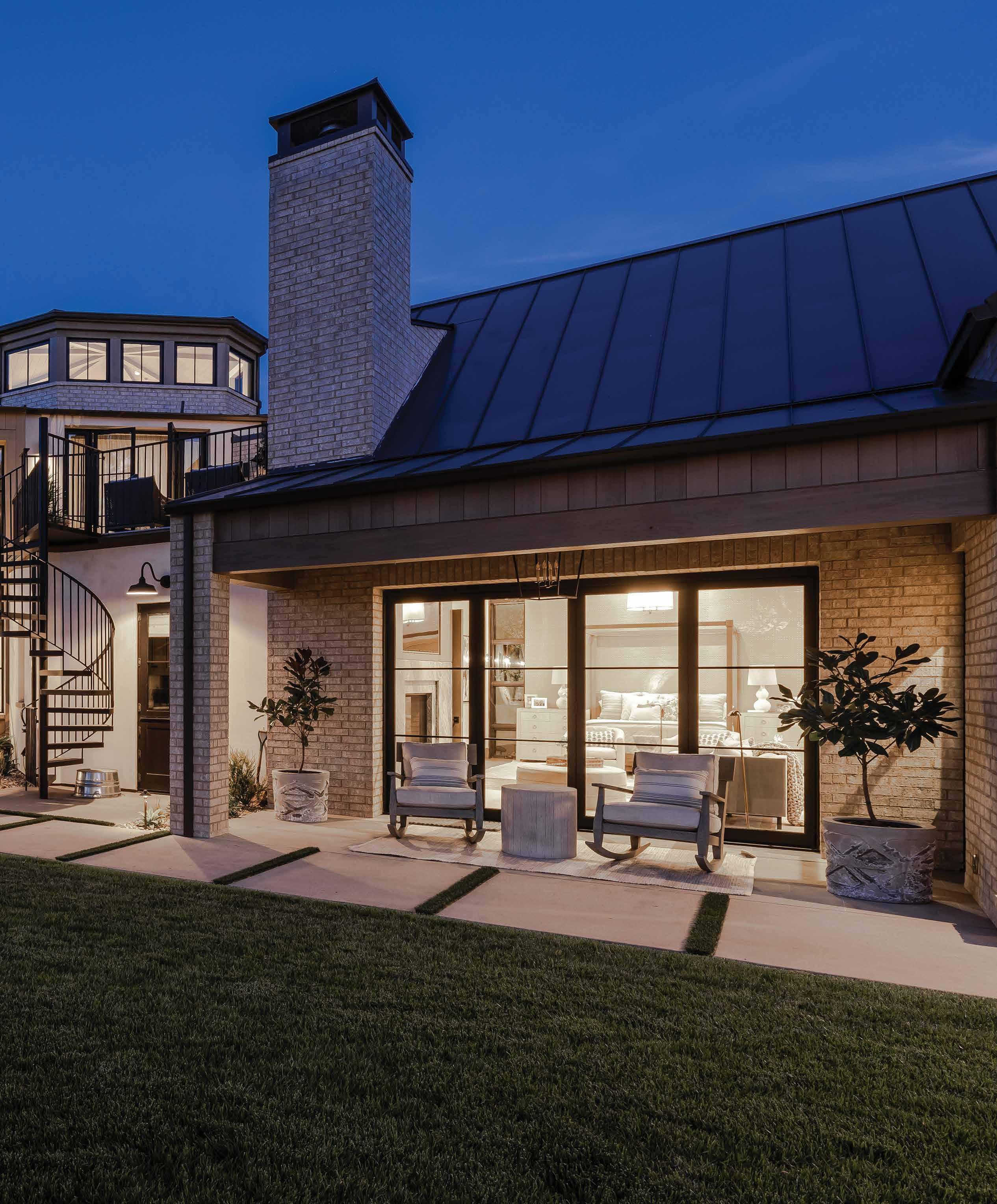
A soulful, site-specific forever home in Orange County.
PHOTOGRAPHER Nick Davies. ARCHITECT Amat Tajudin & Jason Baumgartner, EBTA Architects. BUILDER Matt Dugally & David Loucks, Dugally Oberfeld. INTERIOR DESIGN Stacy Chiavaro, Chiavaro Design. LANDSCAPE ARCHITECT Anthony Dornian, AD Designs. LANDSCAPE CONTRACTOR Richard Lusk. FLOORING Richard Marshall Fine Flooring. MILLWORK Fineline Woodwork. PAINTER Roy Miller Painting. MARBLE AND STONE Kirby Industries. TILE Concept Studio. TILE INSTALLATION Bruce Ennen Tile & Stone. CUSTOM CABINETRY :Thoemmes. DRYWALL AND VENETIAN PLASTER Lido Interiors.
By Lindsey Wilson
Photography by Nick Davies
At the heart of the remarkable Orange County residence known as Santiago Oakes lies something unexpected: a garage. But not just any garage — this “man cave,” built before the rest of the new home even existed, was so loved by the homeowners that it became the design touchstone for everything that followed.
As principal architect Amat Tajudin of EBTA Architects explains, “The site already had a particular style started a few years ago: a barn that houses bedrooms, an automotive display, a bar and a large living area. That shape influenced our roof forms, and we created a connection with the new home and the older structure.”
That connection between old and new, traditional and contemporary, architecture and nature, became the foundation for a truly one-of-a-kind home. From the warm materials
used throughout to the thoughtful blending of styles, it’s where seemingly disparate elements come together in complete harmony.
Builder Matt Dugally of Dugally Oberfeld recalls his first reaction to the design: “You look at the program and think, ‘Is this going to work?’ Traditional brick with a contemporary staircase, barn rooflines with metal and wood windows side by side; it’s a collision of materials. But in this house, it really works.”
The homeowners had lived on this property for 25 years and had resided across the canyon for two decades prior. They raised four children here, and when the time came to build a new dwelling, they had a simple yet meaningful goal: a forever home that felt close to nature, was warm and gracious, and could host big family gatherings.
Principal designer Stacy Chiavaro of Chiavaro Design brought the interiors to life with a sophisticated yet
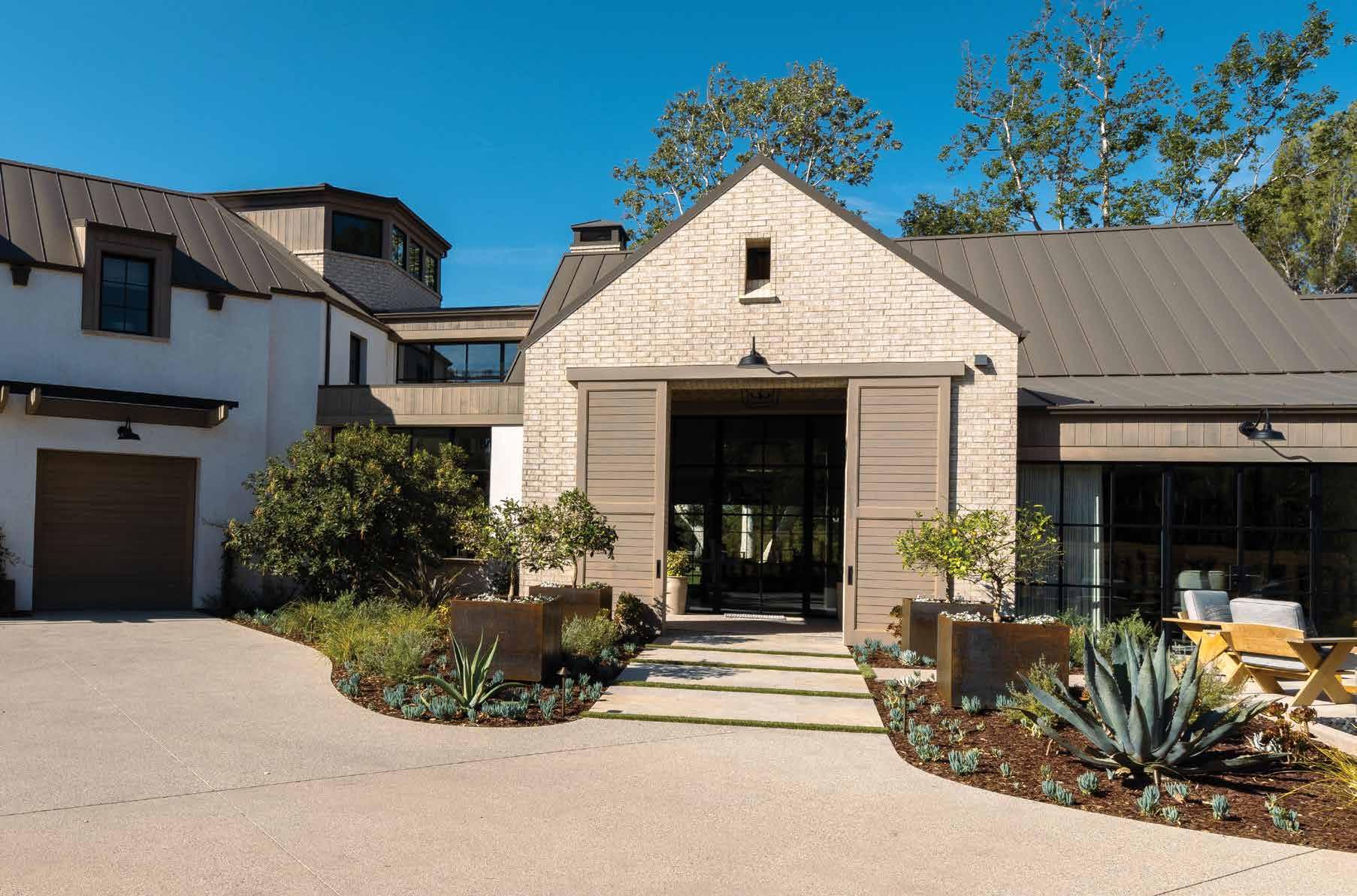


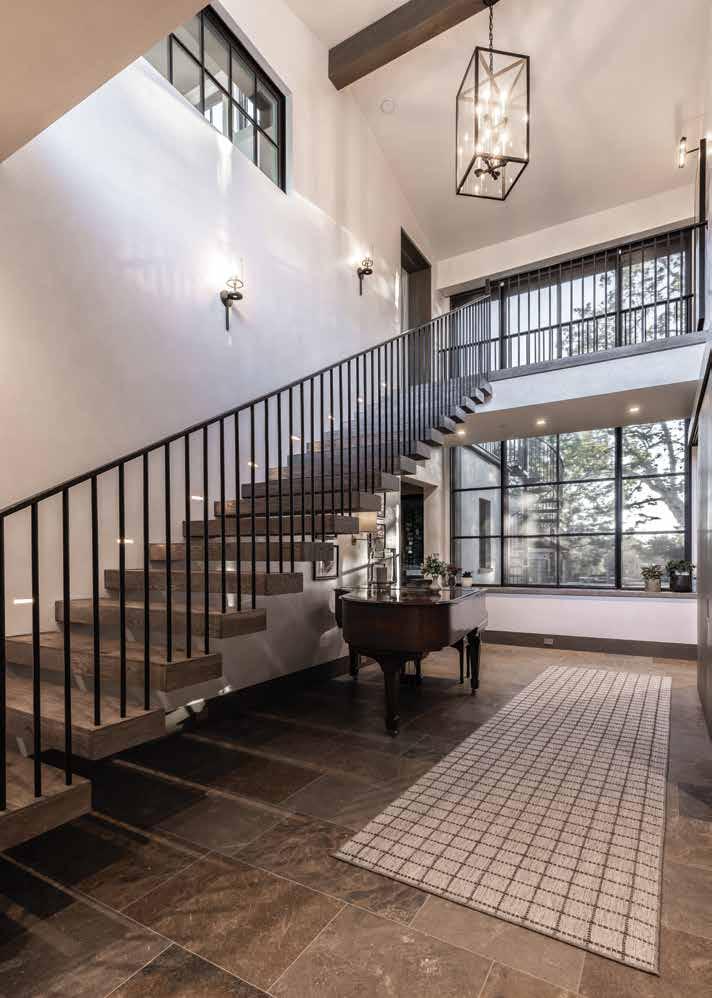
welcoming approach. “The furnishings are a charming mix of modern and traditional styles set amongst reclaimed oak flooring and contemporary oak wall paneling,” she explains. “It’s a contemporary ranch home nestled in the rolling hills, and we wanted it to feel like it had always belonged here.”
The landscape deeply influenced that sense of belonging. “The mature oak trees were critical,” Tajudin says. “We designed the new home using a Y-shaped footprint to match the original house and to preserve those trees. We keyed off the long driveway and made the oaks focal points, creating new views that enhanced the serenity of the site.”
Clerestory windows abound, bouncing light around nearly every room. Large steel and glass pivot doors open to a great room and loggia beyond, immediately blurring the line between inside and out. “We created large, covered patios where Stacy was able to transition the interiors to the exteriors in a seamless way,” Tajudin says. The connection to nature is felt throughout, from the primary suite’s accordion doors that open to a private courtyard— crowned by a unique water feature—to the outdoor shower nestled between his-and-hers bathrooms.
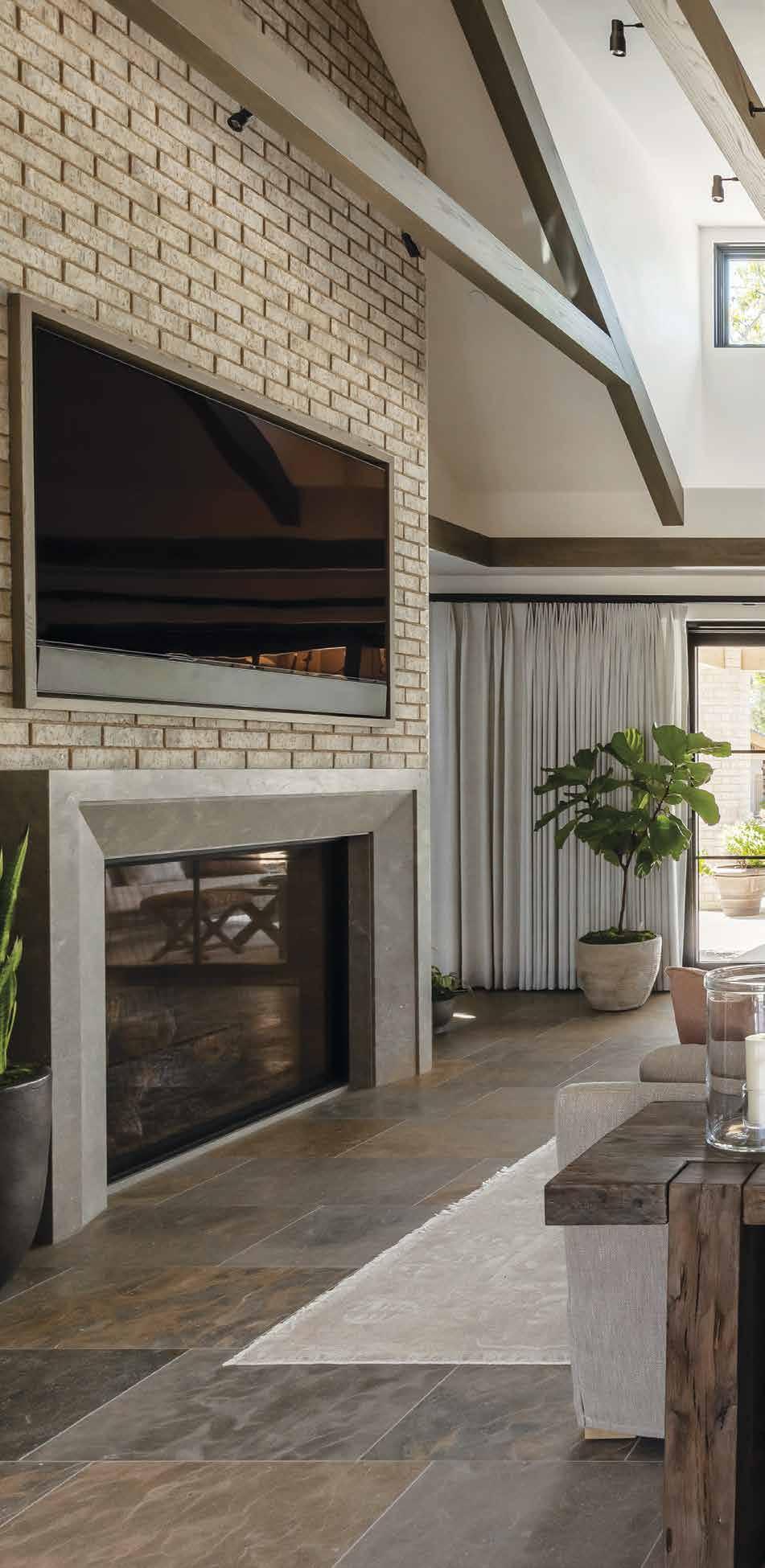



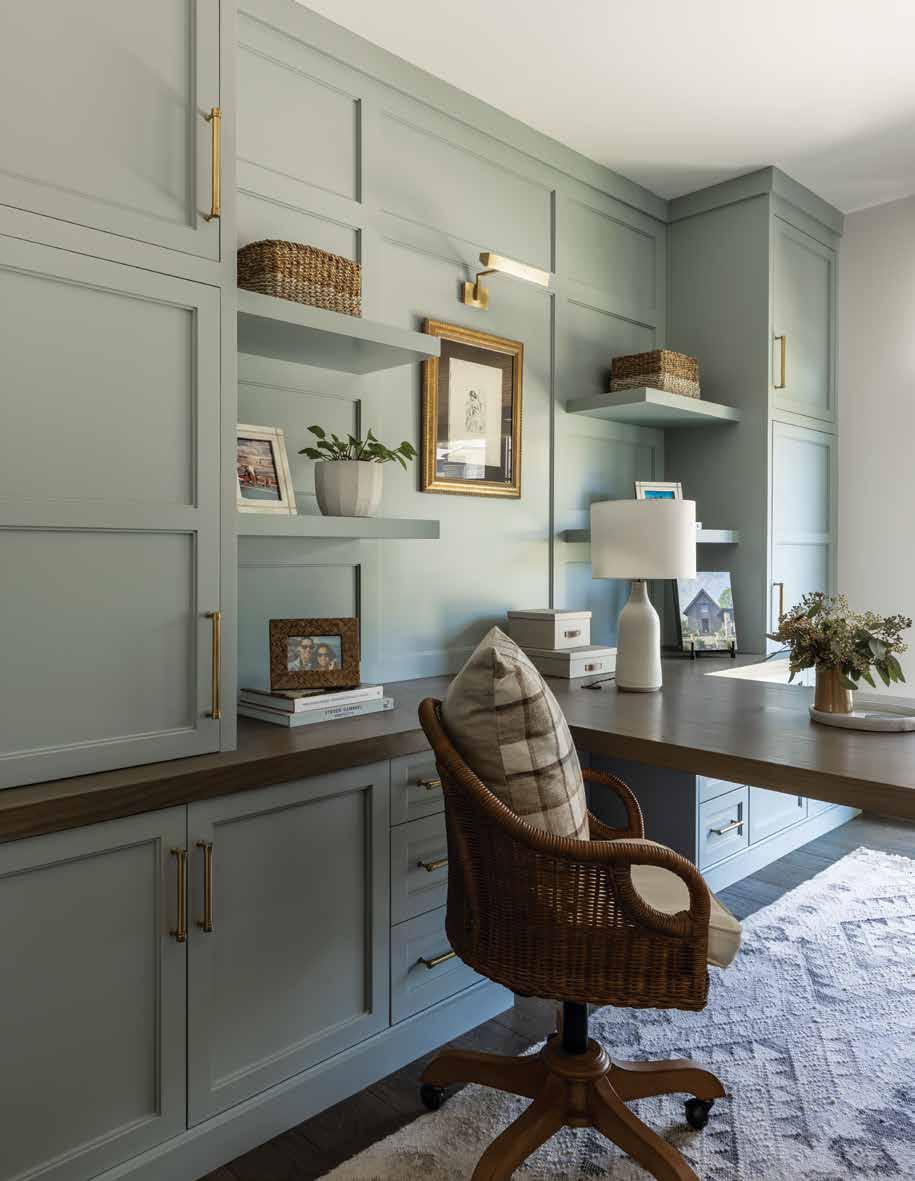
“The house lives like a single-story home,” Tajudin adds, “with all the essential functions—kitchen, dining, family room, guest suite and the primary bedroom—on the ground floor. Upstairs is designed for guests, with two suites and a lounge with a common living area and kitchenette so overnight visitors feel truly at home.”
The residence reveals a series of thoughtful surprises as you wind through it. “There’s a powder room that’s incredibly dramatic and a small office off the primary that feels like a hidden gem,” Dugally says. The textures are rich and tactile: plaster walls with a satin finish, multi-color limestone floors, leathered quartzite countertops and a marble-clad shower in “her” bath. “You’re enveloped in warm materials, family history and nature,” Chiavaro adds.
A consistent theme of Santiago Oakes’s creation is the strength of collaboration. “The team was incredible,” Tajudin remarks. “I’ve worked with David Loucks of Dugally Oberfeld for almost 40 years, and Stacy was the perfect recommendation for this project. Everyone
stayed in their lane and trusted each other—it was a once-in-a-lifetime kind of synergy.”
Dugally echoes that sentiment: “Every project that turns out well has a lot to do with the clients, and here, they were amazing — open-minded, patient, gracious. They let the process unfold to get exactly what they wanted.” Even complex technical challenges, like satisfying modern fire codes and integrating dual window systems in wood and metal, were resolved with thoughtful intention and painstaking execution.
“This home is a reflection of who they are,” Chiavaro states. “It’s not just a place to live, it’s where they welcome their family, host charity events and give back to the community. We were honored to help create a home base for their next chapter.”
And that original garage—the beloved “man cave”—still stands, now joined by a home that rises to meet it both in spirit and in style.

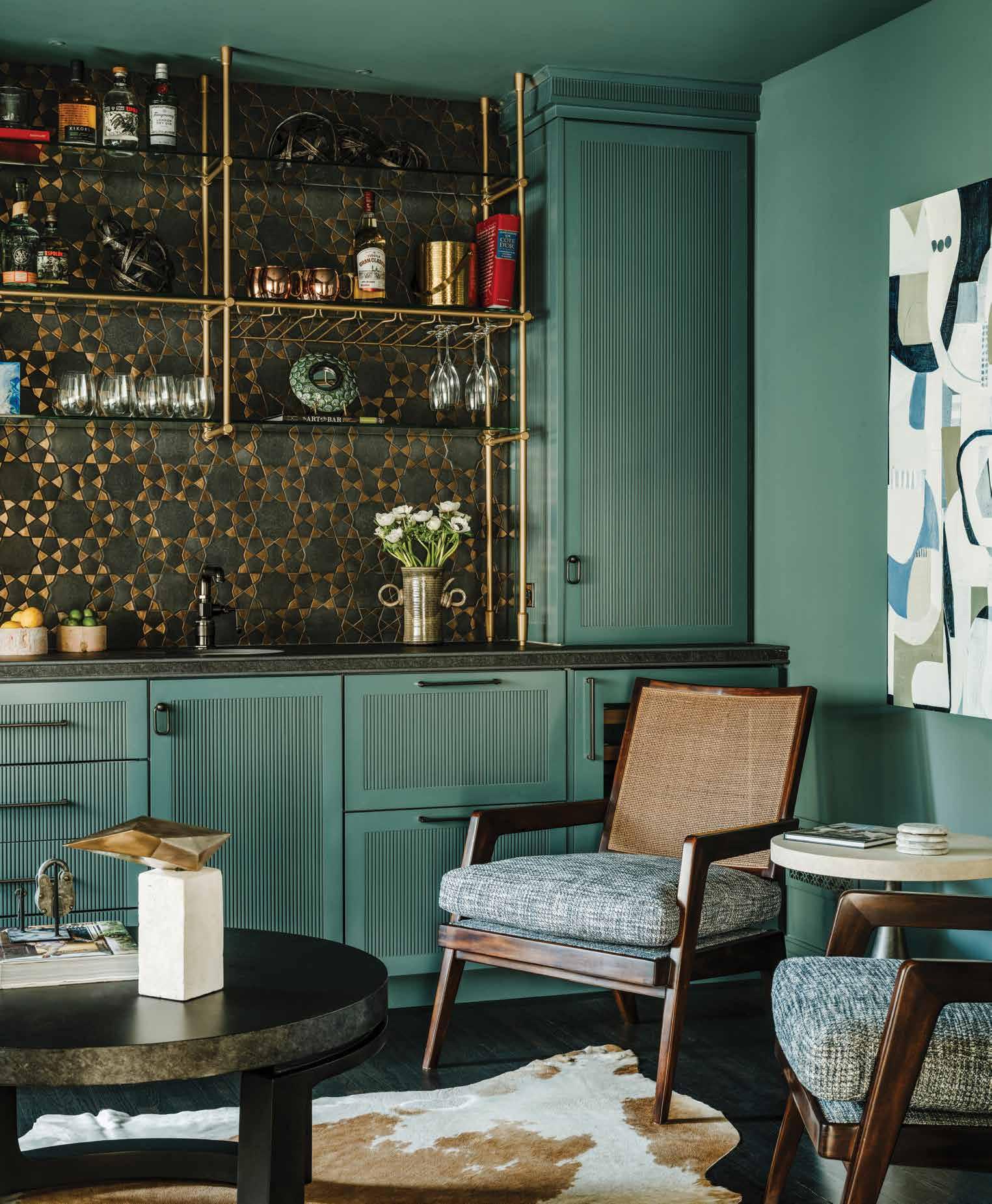
An alluring home with a historic past.
By Nakayla Shakespeare Photography by Lance Gerber
Situated oceanfront on the sandy beaches of Laguna Beach is a historic home that melds fresh design with the soul of its antecedents. Mere steps from the hypnotic swell of the ocean, this home serves as a family retreat for its new owners, reimagined to stylishly host unforgettable memories for years to come.
The home was built in 1928 and was formerly owned by Hollywood star Diane Keaton. Its architecture accommodates the laid-back lifestyle commonly adopted near the coast while also paying homage to California Mission style through unique features such as a white stucco exterior, original terracotta roofing and flooring, mosaic tiles accenting the main staircase, and the hand-painted ceiling in the main dining room.
The home’s refresh was spearheaded by Rachel Morrison of Morrison Interiors. “It’s
an incredible project,” Morrison says of the house. “We were so blessed to be able to work on it.”
The client hired the design firm to breathe individuality back into the home. “The home had gone through a few owners,” Morrison mentions. “The person who owned it before our client had refurbished it in a way that everything matched, which took away from the home’s original charm.”
Through layering multiple textures with unique patterns, Morrison and her team brought personality back to the residence, infusing it with a welcoming warmth while elevating its aesthetic appeal.
“The clients are going to live in this house,” Morrison says. “The beds aren’t always going to be made, beach toys are going to be spread throughout, so we didn’t want it to feel like they couldn’t live in the space and enjoy it.”
PHOTOGRAPHER Lance Gerber. BUILDER Ultimo Development. INTERIOR DESIGN Morrison Interiors.
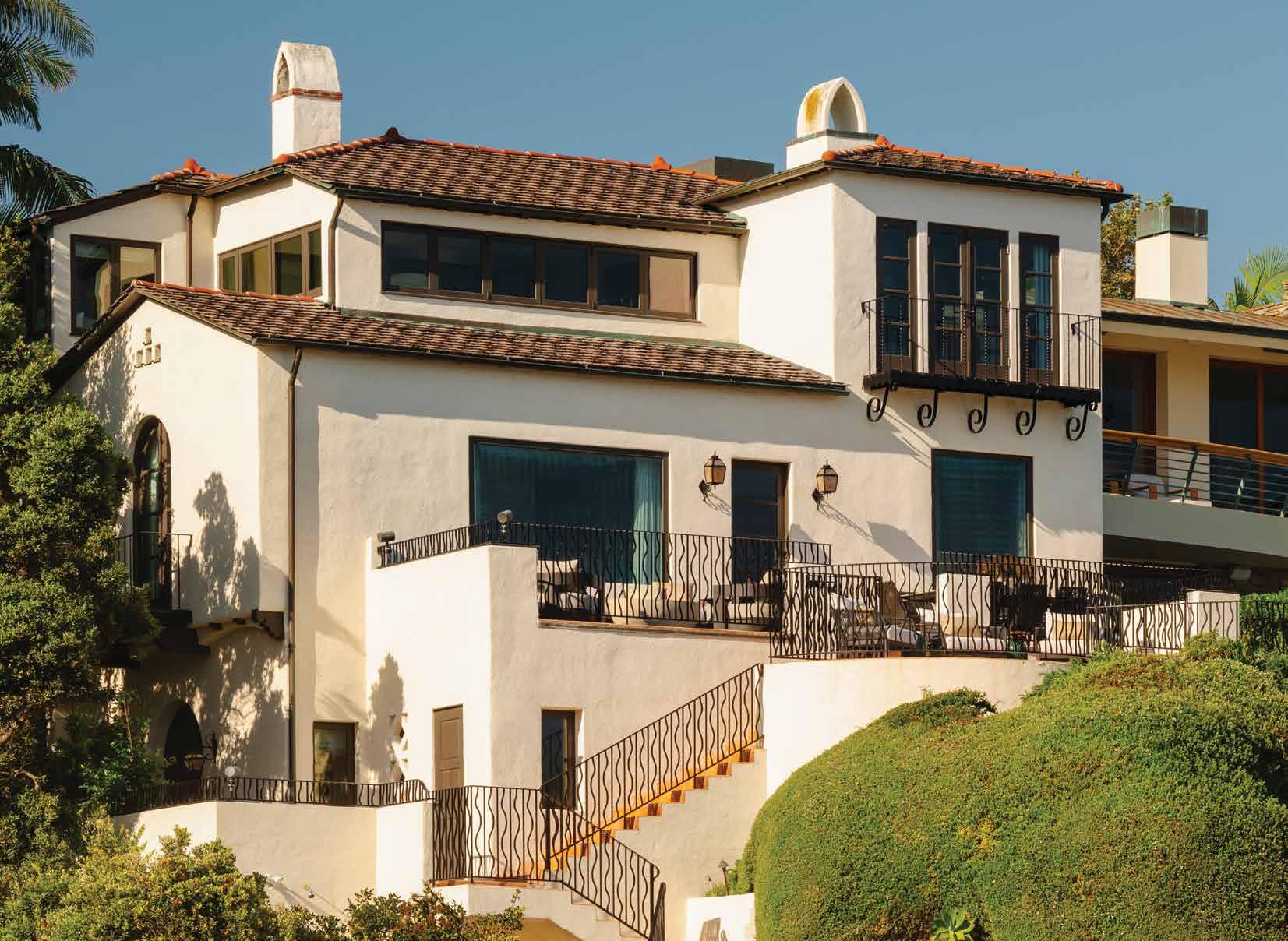
Inspired by the cove’s color palette, Morrison opted for complementary colors in the main living and dining spaces. This allowed the rooms to be visually intriguing without competing for attention with the breathtaking views of the Pacific Ocean.
Functionality of the house was a key factor in the design decisions. “The clients had an idea of how they wanted it to function,” says Morrison. “The big challenge was to lay things out in a way that was going to feel good while also giving them the usage they were looking for.”
One example of Morrison facing the challenge of marrying excellent design
with optimal functionality is in the beach room. “We laid this space out about a dozen times,” Morrison recalls. “They wanted it to be open enough so the kids could pile in with sleeping bags, but also have enough furniture so that it could serve as a lounge. Everything in that room had to be treated as if it were outdoors due to its having direct access to the beach.”
The kitchen underwent a complete refresh, transforming from a dated space that was disjointed from the unique characteristics of the home’s exterior into a warm, Spanish coastal style kitchen that incorporated thoughtful accents and reflected the house’s originality. Patterned flush-mount


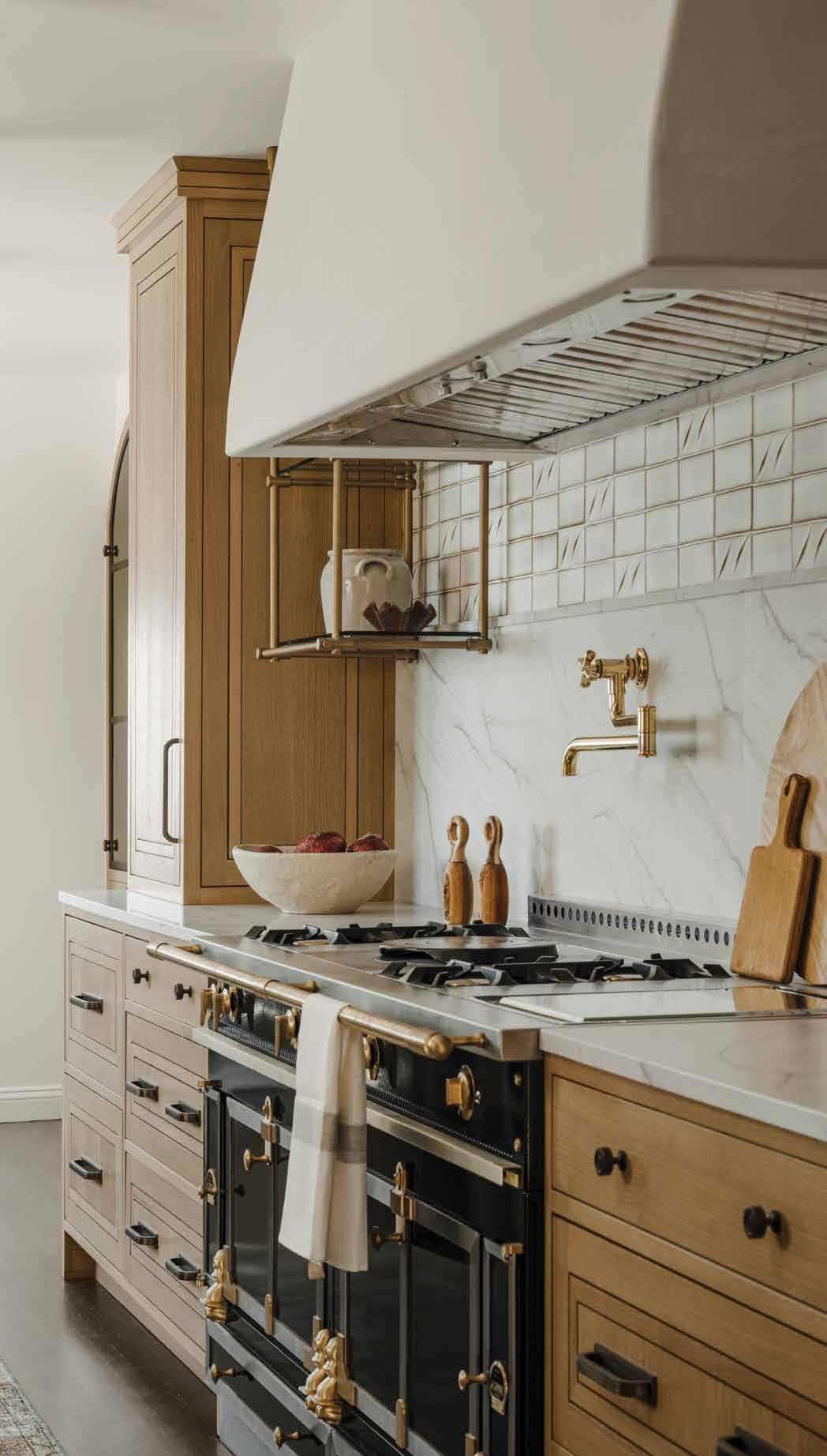



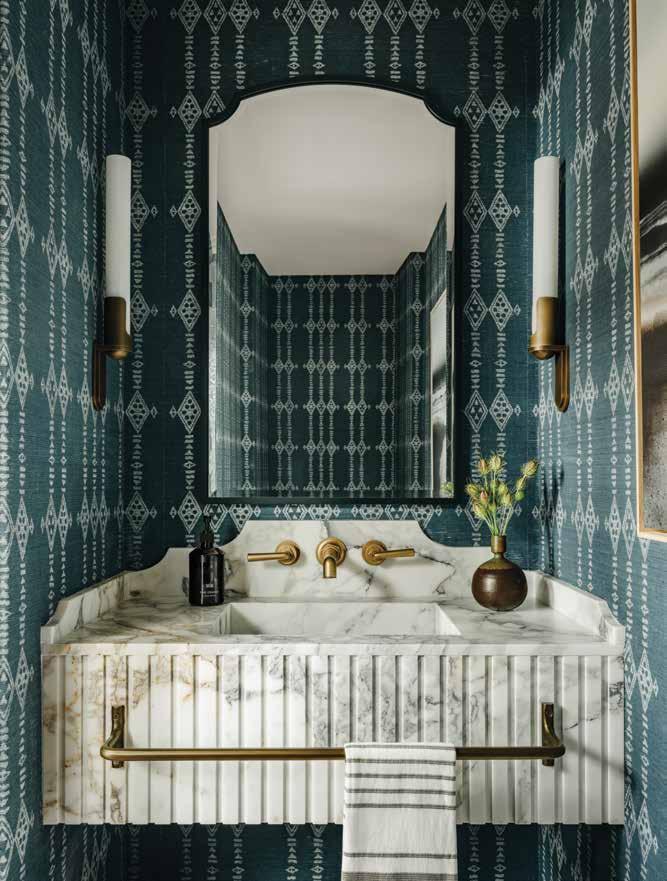



lighting showcases this sentiment. “The lighting has a lot of charm and is an unexpected element,” Morrison says.
Other notable features of the home include a black marble bathtub in the primary bathroom, which had to be craned in due to its weight; the zen-like, seafoam green fitness center, which showcases Morrison’s talent for tastefully incorporating patterns with texture; and the laundry room, which adds a rustic element to the interiors and makes a mundane task feel more relaxing and enjoyable.
“The clients didn’t want their home to feel like it contained all new furniture,” Morrison
notes. “They wanted it to feel collected, curated and historical.”
Morrison describes the home’s overall appeal as quiet luxury with coastal comfort. Her favorite space is a blue jewel-tone lounge room accented by a geometric mosaic backsplash and brass shelving adjacent to the home’s entry. “We wanted it to feel like a San Francisco speakeasy,” Morrison says. “This space to me is like a jewel box. I love it so much.”
With uncompromising attention to detail and a deep respect for its storied past, this historic estate has been transformed into a contemporary sanctuary that celebrates both its rich legacy and the beauty of modern living.
By Nakayla Shakespeare



As we continue the tradition of adding new designers to our Top Designer family, the work remains impressive.
This year, three new visionaries—Amy Meier, Jeffrey Maynard and Sheldon Harte—are joining the arsenal of designers who push the envelope regarding creativity and execution of luxury residential interior design. Not only is their work next level, but their backgrounds tell the story of passion and talent coming together to create businesses that contribute breathtaking results for their clients.
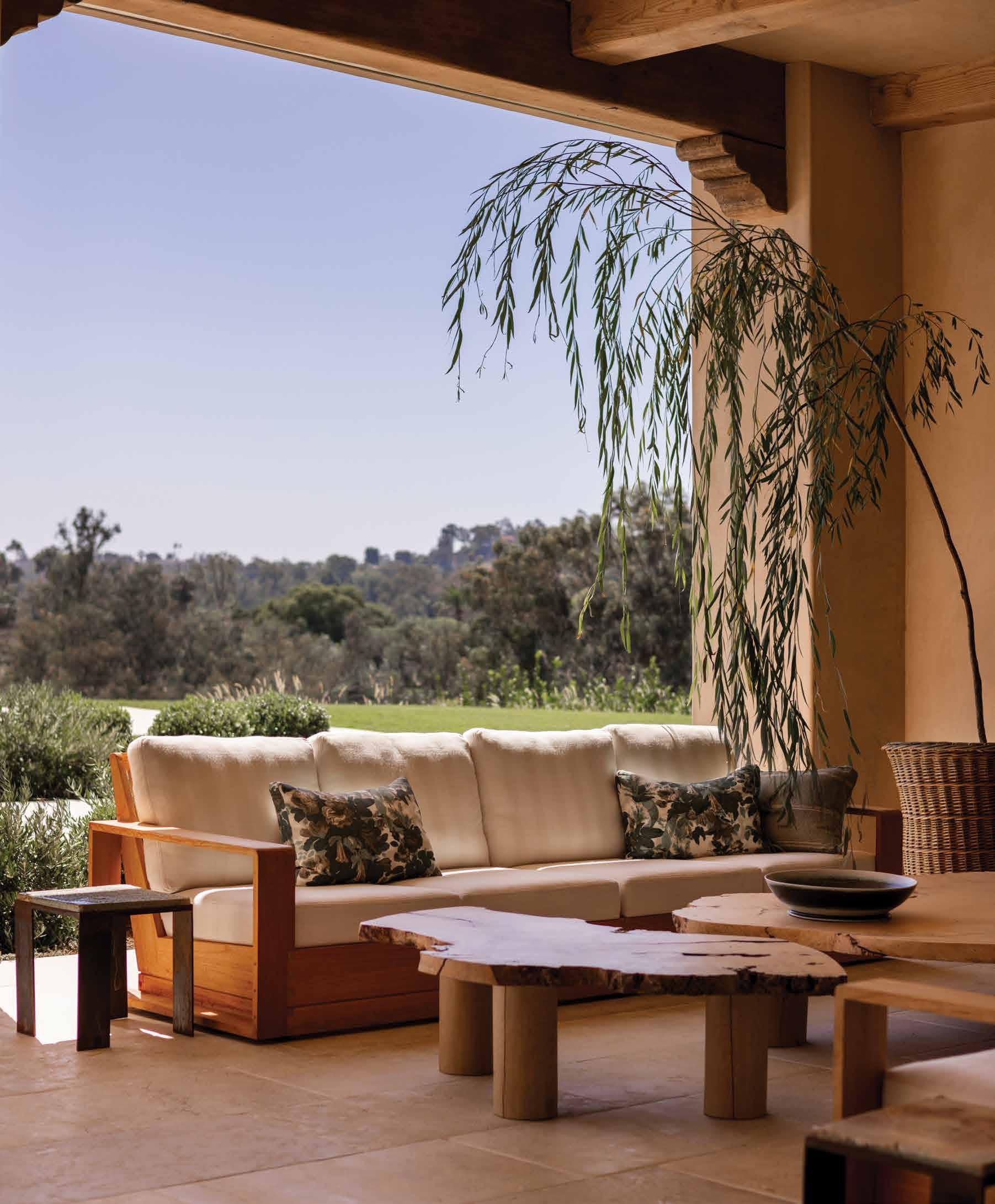

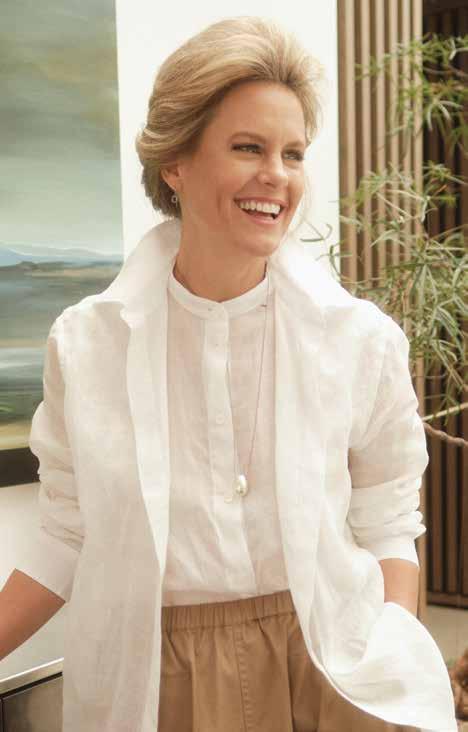
Amy Meier, founder and principal of Amy Meier Design, is an extraordinary designer best known for her sleek, classic and neutral interiors. Meier founded her firm in 2009, shortly after getting
married. “My husband and I got married on a Saturday, packed the car and traveled from Boston to California on Sunday, and my website went live on Monday,” Meier recalls.
Over 16 years, Meier has grown her firm to a team of eight, working on some of Southern California’s and North America’s most luxurious residential homes. She attributes her success to her ability to bring her clients’ visions into fruition. “For me, it’s all about the client,” she says. “They are the ones who inspire me. My hope with all my projects is to translate my client’s viewpoint and create intentional designs.”
Simplicity, kindness, creativity, positivity and growth are the key values Meier holds close to her heart and implements in her firm, not only fostering an optimistic approach to the design process, but also nurturing a healthy and positive work environment for her team.
“I think that having a collaborative and positive team atmosphere is wonderful,” Meier says. “We always seek to be around people who are eternally positive and have a growth mindset. Nothing is above us, and nothing is below us.”
With her client-centric approach, Meier crafts bespoke homes that are equally intentional and visually beautiful, allowing homeowners to create lifelong memories.
Meier is currently working on a book with Rizzoli to be published in Spring 2027, while also expanding her retail store where she sells one-of-a-kind pieces to the trade. In addition to her retail store, she also collaborates with artists and local makers to create exclusive production items, and is currently developing product lines in partnership with Hartmann&Forbes. When she’s not working, her constant learning attitude allows her to delve deeper into her love of gardening and yoga.
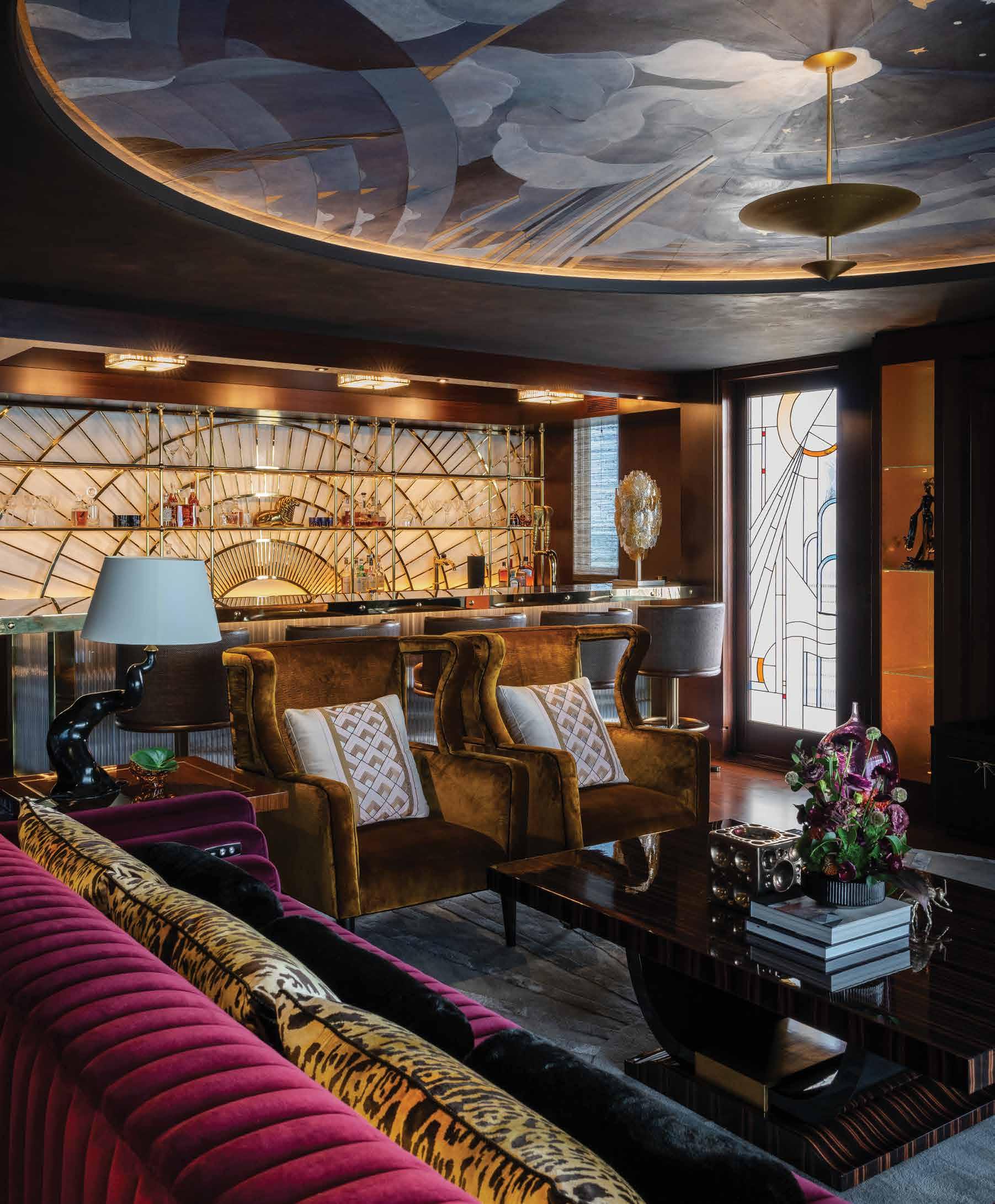
by Hugo Landa

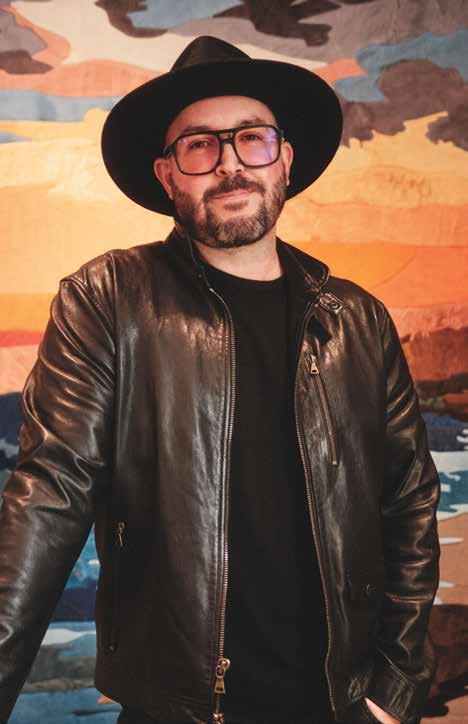
Atrue connoisseur of crafting deluxe spaces that showcase a client’s individuality is Jeffrey Maynard, founder and principal of Maynard Design and Interiors. With nearly 20 years of
experience, Maynard has perfected the art of capturing a person’s soul and personality through design.
With a workload of 30 plus projects at a time and a clientele that is generated solely through word of mouth, Maynard’s work speaks for itself. Each project flawlessly displays the dreams of their clients.
Maynard values challenges, both challenging his staff to accomplish new milestones and his clients to think outside of the box with their ideas. “ I think it’s important to push the boundaries [of ideas] for our clients. These projects are the realization of longterm dreams for the client. We like to try to open people’s eyes to other possibilities and options so they can dream a little more.”
As a steward of maximizing a home’s creative potential, Maynard often draws inspiration
from his travels, frequently visiting places like Japan to broaden his worldview and gain new experiences. “I think a lot of my inspiration comes from a place of understanding,” Maynard explains. “Understanding different cultures and different ways of living—and how design reflects those differences.”
With a deep passion for his craft and a commitment to delivering extraordinary results for his clients, Maynard has built an environment where creativity flourishes, client expectations are consistently surpassed, and great design remains the central focus.
“It’s definitely not about designing for yourself in the industry; it really comes down to taking care of others and their needs,” Maynard says.
Maynard is currently working to expand his design services by opening an office in Hawaii.

by Trevor Tondro

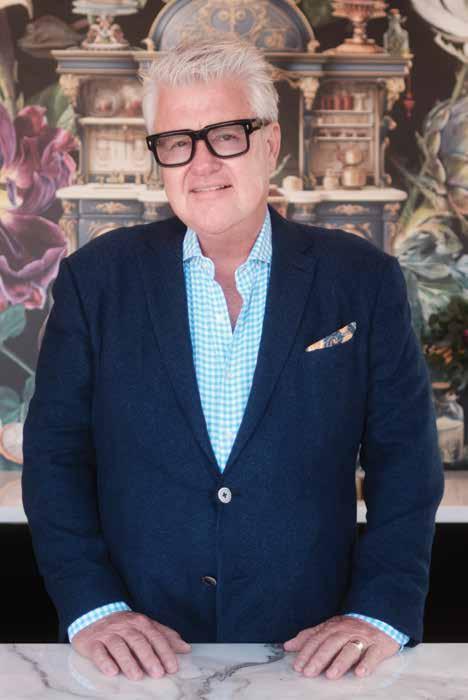
Sheldon Harte, founder and principal of Harte Davis Interior Design, stands at the forefront of his field. He designs captivating interiors that feel warm, welcoming and timeless. Harte founded his firm in 1984 and has created luxurious spaces for some of the most extraordinary
homes in Southern California that encompass a vast array of design styles, reflecting his clients’ lives with striking individuality.
With more than four decades of experience, Harte traces his first ignition of passion for design back to his mother. “We would go antiquing all the time, which at the time seemed boring. But over the years I realized how much I absorbed,” he says. “My mom had great panache and style, so she started my journey into designing interiors and furnishings.”
The nucleus of Harte’s design philosophy is an unwavering commitment to his clients, which is why his relationships with them often last longer than a single project. “We grow a lot with our clients,” Harte says. “We start with them in one place, and then 25 years and five houses later, we’re at a completely different place in life. It’s an enjoyable journey to go on.”
Interiors designed by Harte are more than just attractive spaces. They are havens for families to foster life experiences. “We’re doing more than just designing spaces. We’re creating environments for our clients,” he says. “I think the greatest aspect of what I do is giving them a background to live their lives.”
Harte’s career success thus far is his primary motivation for further expanding his business, and he is grateful to the clients who enable him to pursue his passion. “I am very fortunate to have amazing jobs with great budgets,” he points out. “Creating homes that are bespoke and one-of-a-kind is really special.”
The designer’s book, The Refined Home: Sheldon Harte, is slated for publication this fall. It will offer a window into his remarkable portfolio—celebrating a design legacy defined by elegance, versatility, and a profound understanding of how people live.
Old-world silhouettes and fashion techniques make their way back onto the runway and our magazine pages.
By Nakayla Shakespeare
Photography by Mark Sacro
Step into the realm of beauty and romance through Tuscaninspired architecture and stunning wardrobe silhouettes. This photoshoot tells a story of elegance and refinement with a touch of old-world charm and enchantment. We encourage you to take in each shot and watch as the story of the hauntingly beautiful spread showcases the fashion cycle and how certain trends can evolve when interpreted through a modern lens.
CREATIVE DIRECTOR Renee Dee. EDITOR-IN-CHIEF Nakayla Shakespeare. PHOTOGRAPHER Mark Sacro. LIGHTING Jaime Anderson. HAIR & MAKEUP Melissa Evans. MODEL Kyla, The Industry. ICONIC TEAM Amalie Rhebeck, Madeleine Perich. WARDROBE Amy Atelier, My Sister’s Closet. STYLING Nakayla Shakespeare. LOCATION Villa Aurelia. INTERIOR DESIGNER Isabel Candelaria, Earth & Images. ARCHITECTURE Candelaria Design Associates.

Melinda Dress, Daniela Corte. Gold necklace, My Sister’s Closet.



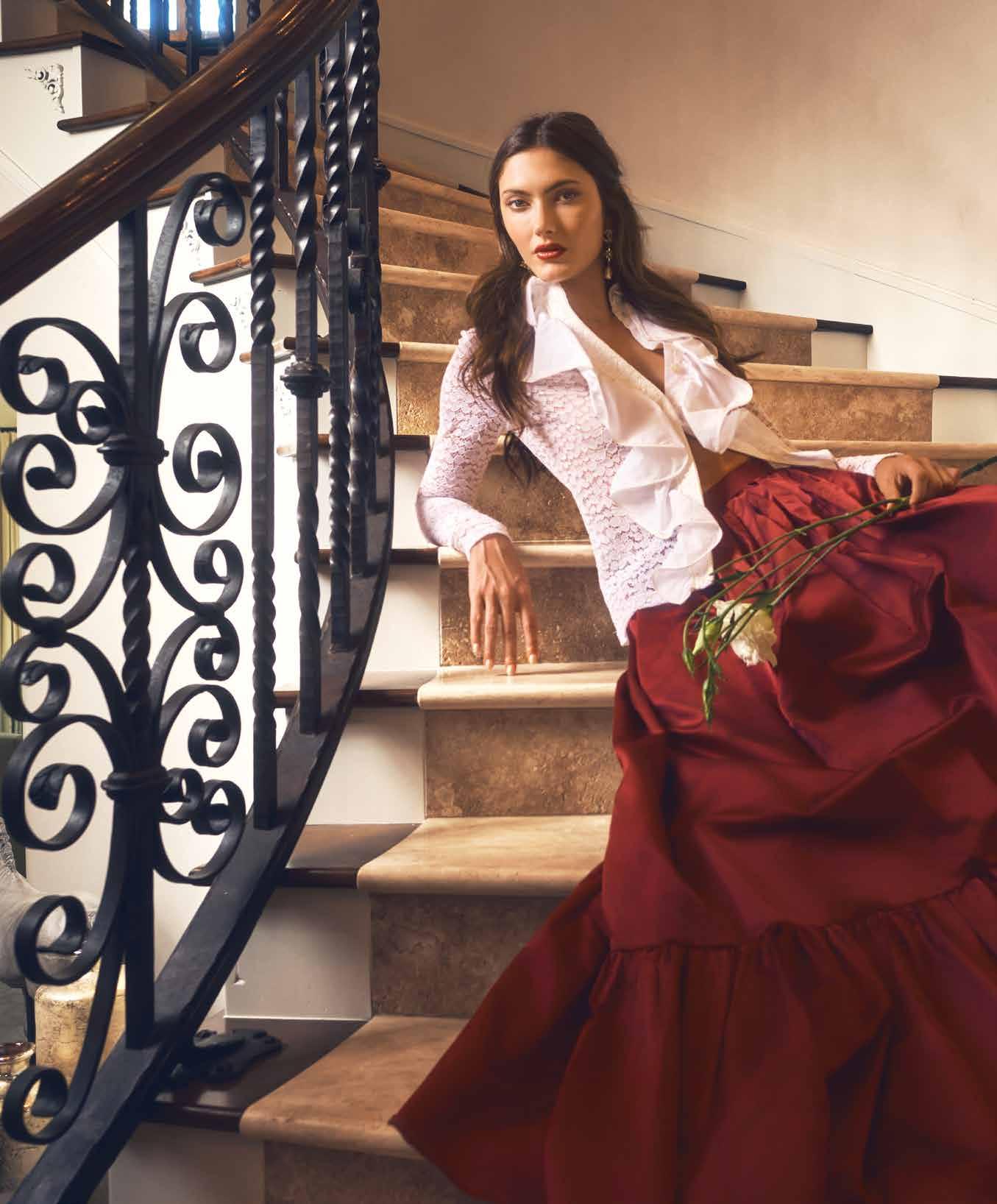
Chanel white lace ruffle blouse, Chanel. Oscar de la Renta plum skirt, My Sister’s Closet. Chanel Earrings, Chanel.
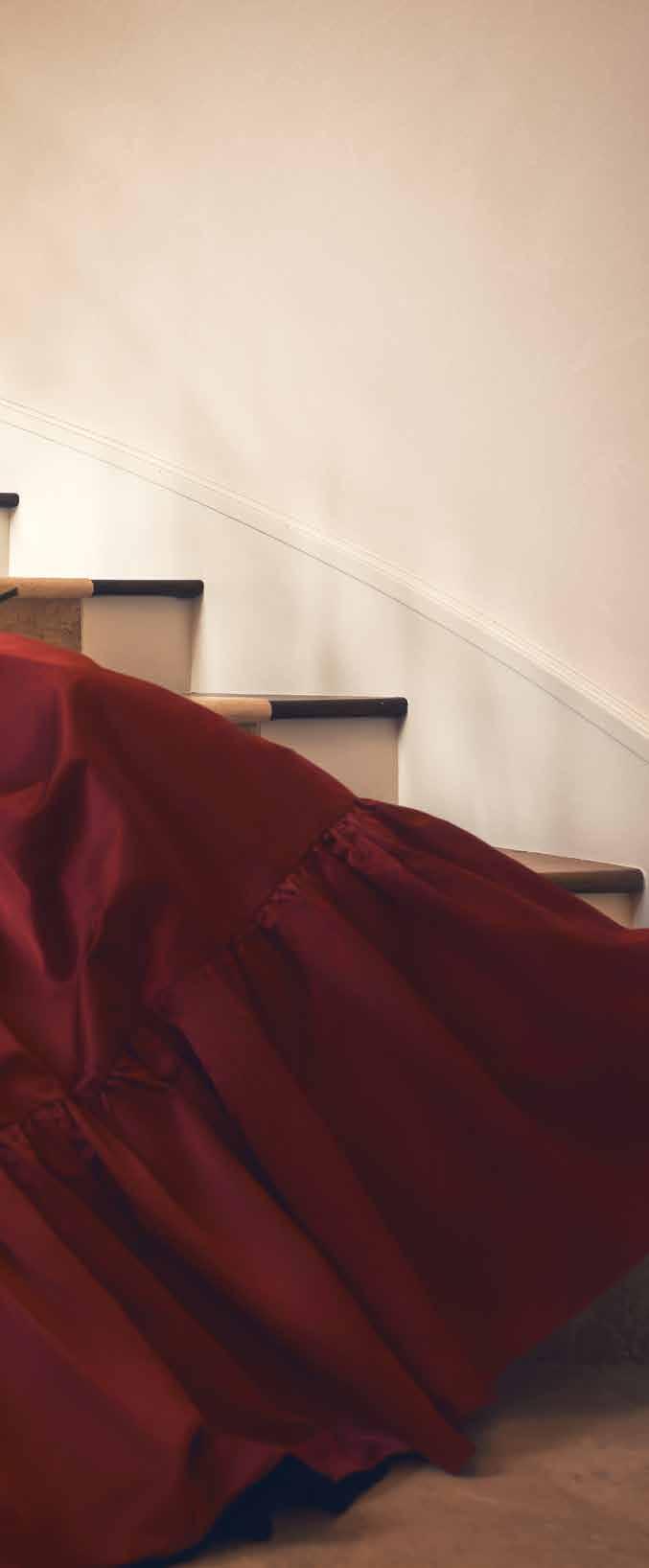
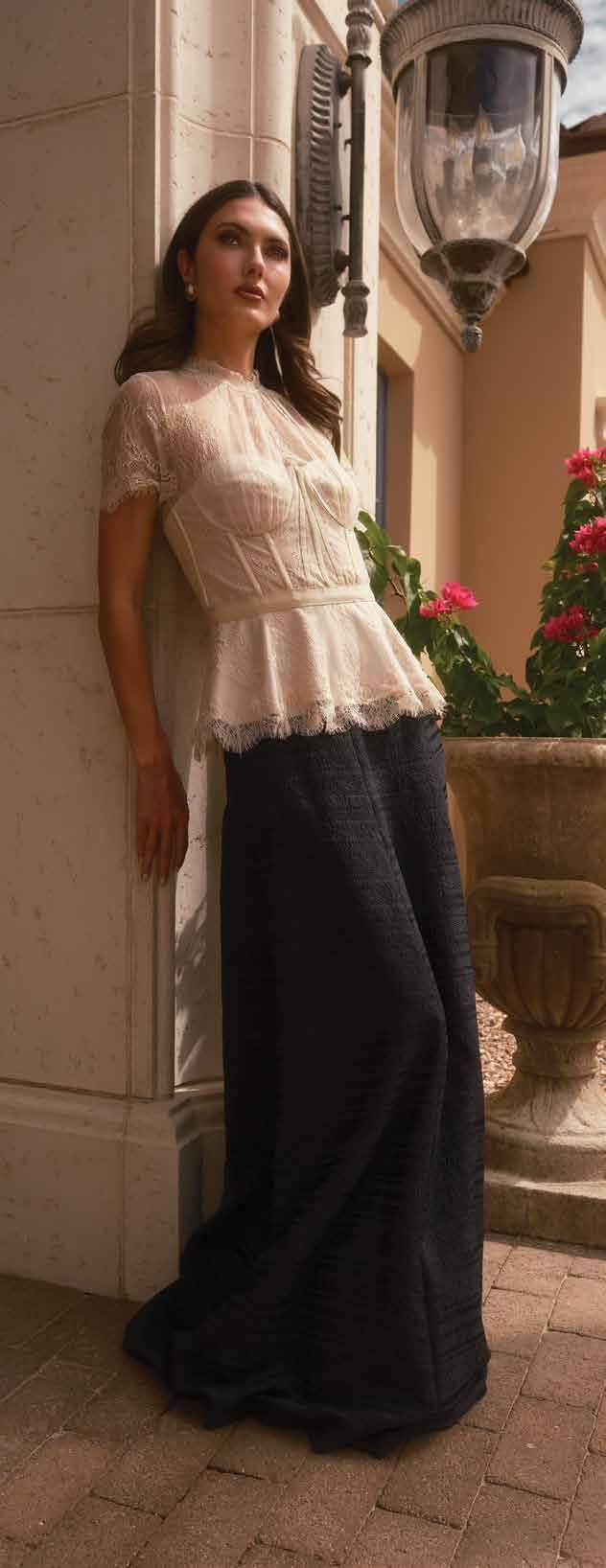


Prada pink ruffled blouse, Prada. Black Prada nylon pleated skirt, Prada.

Originally designed by Candelaria Design Associates in 2006, the client hired Isabel DellingerCandelaria, principal designer and founder of Earth & Images, 19 years later to give the interiors of the home a refresh. DellingerCandelaria brightened the space through a light-colored plaster on the walls and reimagined the kitchen space. The home exudes a strong mediterranean presence, with beautiful chiseled pillars and detailing throughout. The result was a luxurious home with oldworld elegance.
The goal of the photoshoot was to highlight the resurgence of fashion trends that are often associated with the Victorian Era, such as high necklines, ruffles, lace, jewel tones and elongated silhouettes. This photoshoot captures the romantic ambiance of the era by utilizing current fashion pieces that incorporate the significant design elements of that time.
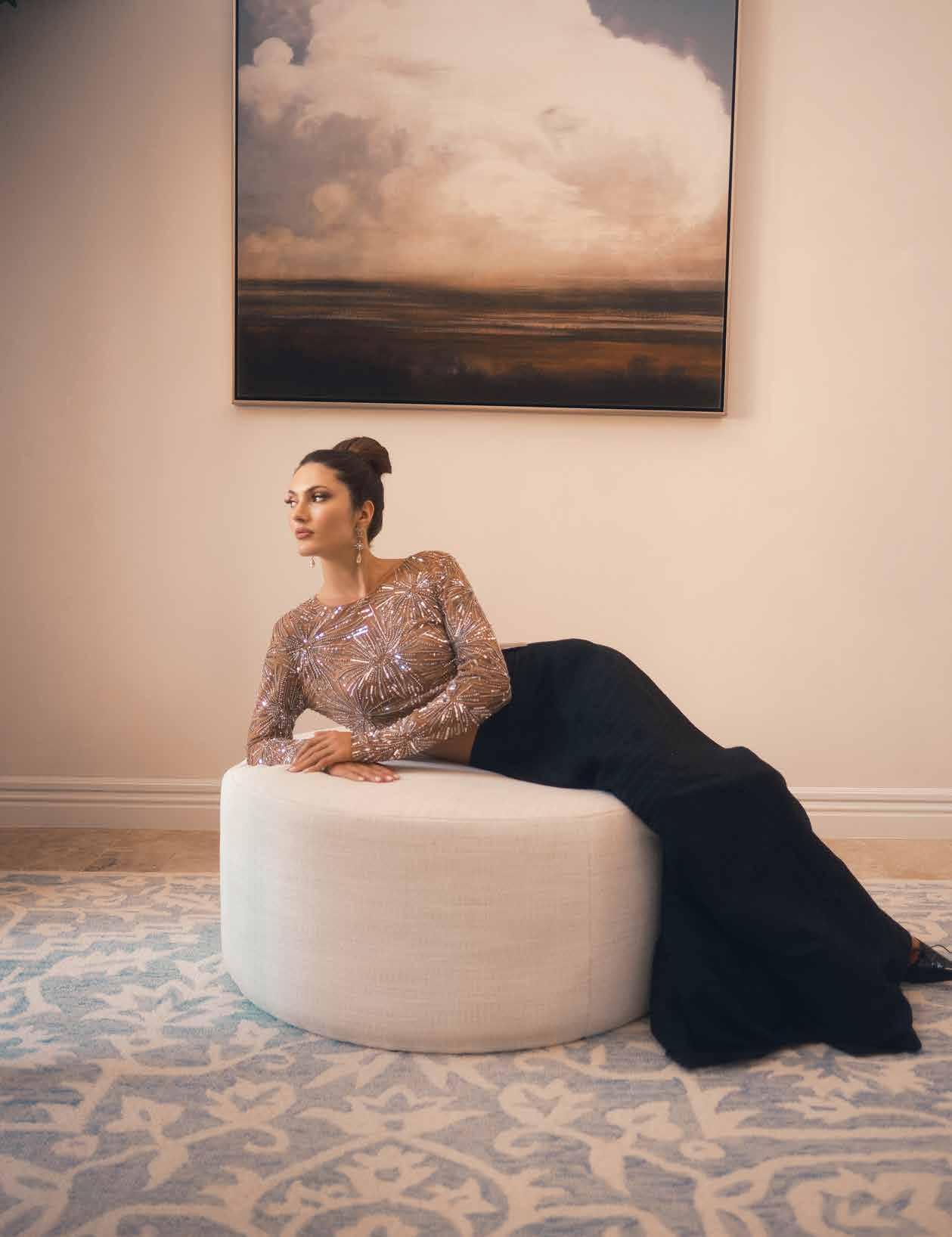
Retrofete Sparkle top, My Sister’s Closet. Alice and Olivia black skirt, My Sister’s Closet. Chanel Earrings, Chanel.


By Amalie Rhebeck
Photography by Draper White Photography
From creating a functional floor plan to finding optimal lighting, designing your dream home from the ground up can be daunting. For Bob Olson, it was like second nature. After decades of developing luxury hotels, Olson created his Lido Isle house with personality and luxury at the forefront of his mind.
Olson carefully considered how the house, with its breathtaking waterfront views, could be a sanctuary for himself and the ideal place to entertain.
“I was thinking about how I was going to use the house and wanted to make sure that every detail followed through,” Olson explains. “Everything from the details in the kitchen, to the bar for entertaining and even the details in my office.”
When it came to finding the right team to bring his vision to life, Olson partnered with Rona Graf, founder and principal designer of Grace Blu Interior Design.
Graf, who had designed two previous projects with Olson, understood how to best pair a space’s functionality with Olson’s personal style preferences.
“She understood how I live,” he says. “I had other proposals come in, but Rona took this as if it were her own and owned it, and there was no way I could pick anyone else because she was so far ahead of the pack. She knew my lifestyle and taste, yet she pushed for some things I was pushing back on. She stood her ground, and I’m glad she did.”
Graf knew she wanted to make the residence feel like a statement piece for Olson, a philanthropist with a knack for entertaining. “I really wanted to make this home a calling card for who he was, and that’s really what we do with all our residences. We want to listen to our clients, honor their personalities and tell a story with their home,” Graf explains.
One of Olson’s primary concerns was ensuring guests felt welcome upon entering PHOTOGRAPHER
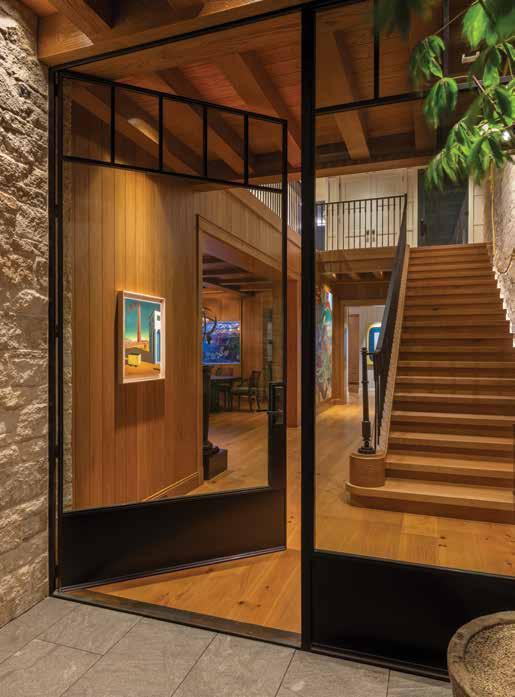
the house, similar to stepping into a beautiful hotel. “What I think about for hotels is how guests will use the space and what will draw them in. I try to evoke an emotion, from the arrival experience to the guest room, to the activities and things that they do. It’s very much in line with designing and building a home,” Olson explains. “Creating those emotional moments; it’s the same thing in my house when you walk in the front door. It’s a wild experience.”
Olson knew that quality lighting would add depth and dimension to the home, so he collaborated with Robert Singer, president of Robert Singer & Associates. Singer, who had also worked with Olson on a previous project, understood that the home needed lighting that would accentuate, not distract, from the unique architecture and design of the space.
“What we did is we brought life to the architectural elements of the home, and most importantly, the art,” Singer says. “The key was making sure the home still had a warmth to it that he can entertain in and change the vibe of the spaces easily.”

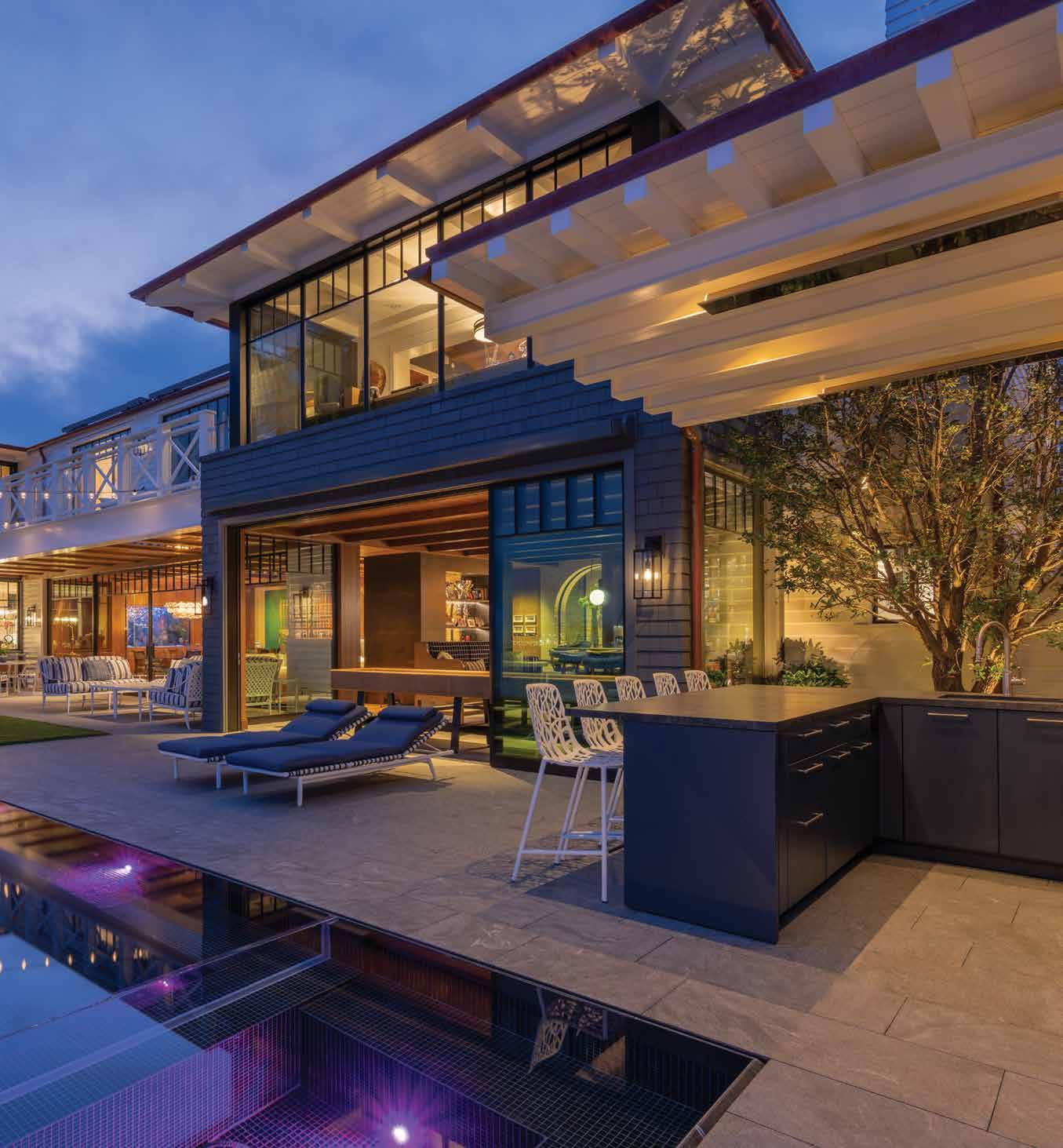


The inspiration for this home was a thoughtful blend of the interior design elements of Olson’s cozy, Aspen home and his former Balboa residence, which had a Nantucket twist.
“It almost became a new aesthetic for this house, which is a very modern yet traditional home, it has the architectural elements of cozy, intimate rooms while still being such a large property,” Graf notes. “We had to marry all of these elements together and still make it feel cohesive.”
“The home has a Nantucket vibe to it, but it is eclectic in the sense that there are architectural elements that you typically don’t see in a home like that. It is very traditional but with a twist,” Singer adds.
Every corner and wall of the astounding 9,000-square-foot residence reflects
thoughtful design, from the custom wallpapers of Olson’s most popular hotels to a specialty bar for entertaining.
“One of the coolest features of this house is that there is no single wall surface anywhere that is not clad with some sort of material, whether it is stone, wood, wallpaper or Venetian plaster,” Graf points out.
With the project completed in a mere 15 months, Olson’s oceanside home now stands as a testament to his eye for luxe design, entertainment functionality and, most importantly, its ability to emulate his true personality.
“It was so important to me to make sure that his personality showed through. It’s what this home represents,” Graf says. “I really wanted people to feel a sense of who Bob is when they walk into this home.”
By Fran Miller
Photography by Chris Loomis
At Scottsdale’s fine-dining establishment, COURSE, wine isn’t just an afterthought—it’s a central part of the experience, thanks in no small part to general manager and sommelier David Sanders. Since joining the restaurant in late 2024, Sanders has quietly transformed its wine program into something thoughtful and approachable. His journey into the world of wine began in the most organic way—at dinner tables and events where wine was simply part of the conversation.
However, it was during his time at Roka Akor that he saw an opportunity to take things further.
Without a sommelier on staff at the Japanese restaurant, Sanders enrolled in the Court of Master Sommeliers’ introductory course, returned with newfound confidence and started selling wine with enthusiasm and expertise.
Fast forward to today, and he now leads an all-certified team at COURSE, collaborating closely with Chef Cory Oppold to craft wine pairings that highlight the nuances of each dish. Their process is meticulous: Recipes are reviewed in advance, wines are selected, and the final pairings are tested the day before each new menu launches. The result is a seamless dialogue between plate and glass— one that consistently delights guests and encourages discovery.
In the following Q&A, Sanders shares his insight on everything from choosing the right bottle at a restaurant to building confidence


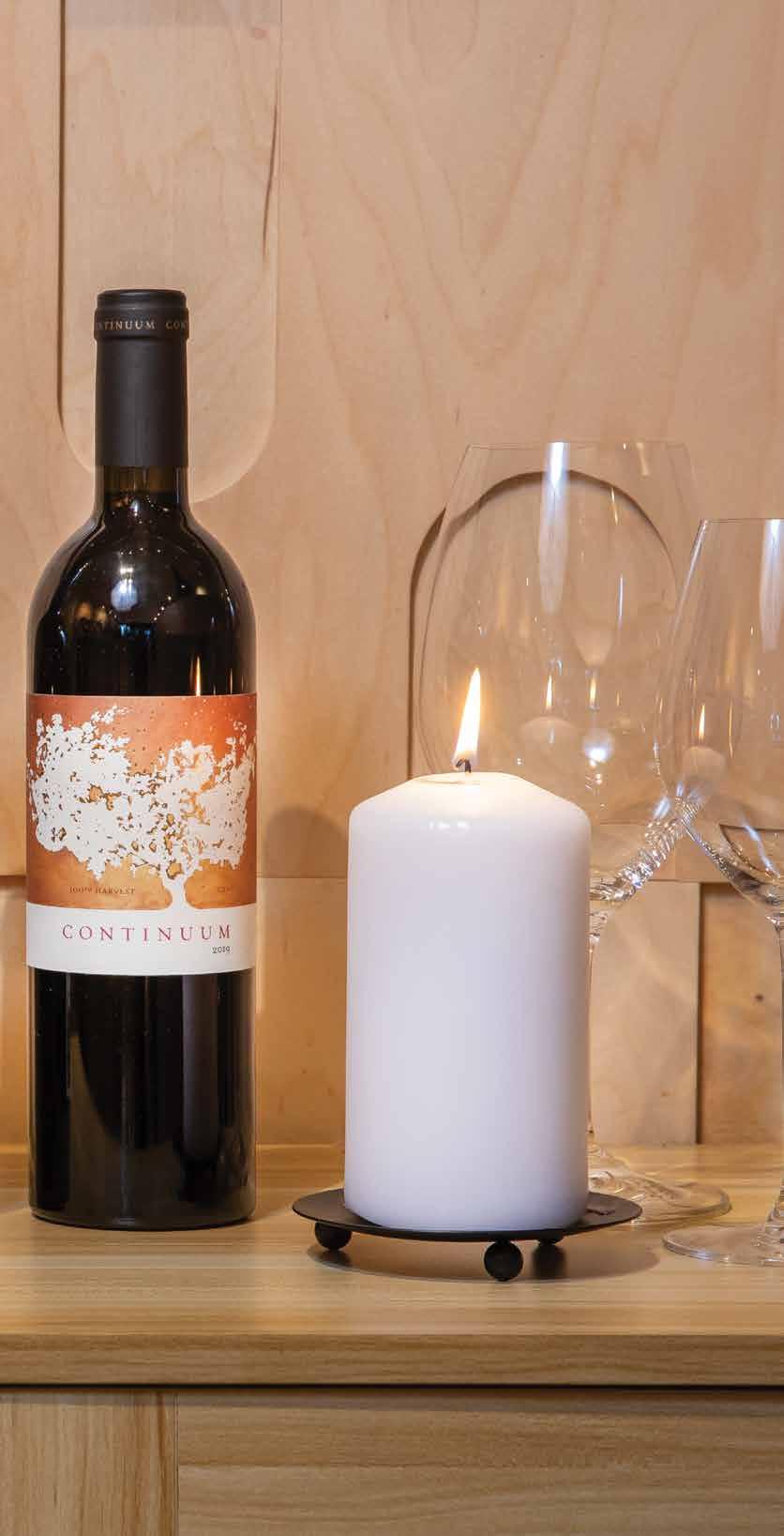
in your own palate. Whether you’re hoping to navigate the wine aisle with ease or simply savor your glass with greater awareness, consider this your guide to getting more out of every sip.
Q: What are the key elements to consider when tasting wine like a professional, beyond sniffing and sipping?
A: The first thing you should always do is look at the wine; you can infer a lot just by sight. Youthful red wines are often more vibrant, with a purple or ruby tone, whereas older reds may fade to a brick or garnet color. White wines will deepen in color to a gold hue with age. The vibrancy of the color often provides insight into concentration and extraction during the winemaking process. If it’s your first sip of the day, it will likely be overly sour. Try that wine again after 15 seconds and watch your palate adjust to the wine in real-time. Another thing to consider when tasting wine like a professional is to refrain from smoking, as it affects your palate and sense of smell.
Q: How can someone develop their palate and better identify flavors and aromas in wine?
A: Going into every tasting with an intentional purpose is the most important way to begin. Smell herbs, grass or anything else you can, and learn to recognize those scents. When you are in a grocery store, pick up a grapefruit and gently scratch the skin to release some of its oil. If you live somewhere like Arizona, where people grow rosemary as a decorative plant, stop to smell it whenever you can. Then, try tasting single varieties first. Learn the basics of popular wines like cabernet sauvignon, pinot noir and sauvignon blanc. When I was learning, I would ask a friend to get me a glass of wine, but not tell me what it was. I would inspect it visually, smell it, taste it and then try to identify some characteristics of it before asking what type of wine it is. I eventually got to a point where I could nail a few of them.
Ask about wine-tasting groups in your area. There are always a few going on, and it helps more than you know to pick up the little things. Read about winemaking and why things are done a certain way. For example, why does champagne sit on the lees? Why do some winemakers use whole clusters when fermenting? Or why is biodynamic farming practiced?
Go to wineries. It doesn’t matter which ones, just go. Talk to the winemakers and ask questions that might seem silly; it will help you in the future. Never fall into the trap of not trying things because you think you don’t like them. I do not enjoy Loire Valley pinot noirs as much as others. However, I try them every chance I get because I want to continually develop my knowledge and identify them when I taste them. I have made it my mission to find a Loire Valley pinot that I truly love, and I will not stop until I do.
Q: What are some wine terms that people often misunderstand, and how would you explain them in simple, practical language, like terroir, minerality, dry, body, etc.
A: Terroir is simple to explain; it’s also the most complicated part of winemaking. It’s all about the environmental factors influencing the grapes’ growth, from the soil, climate and elevation to the farming techniques used. It’s why pinot noir from Burgundy tastes different from pinot noir from Oregon. The environment shapes the flavor.
Malolactic Conversion/Fermentation: This is probably the most divisive aspect of wine among some wine drinkers. It is a secondary fermentation in the winemaking process where malic acid (think tart green-apple acid) is converted into lactic acid and a byproduct called diacetyl, which gives the wine a buttery flavor. It’s most commonly noticed in chardonnay but also in many red wines. It can help high-acid grapes mellow, making a smoother, more balanced wine. It also stabilizes the wine slightly, making it less prone to spoilage. A big, buttery chardonnay from California will completely differ from one from Chablis, Côte de Beaune, Mâconnais or anywhere in New Zealand, South Africa, Chile, Argentina or Australia. It is sad to see people make blanket statements like “I don’t like chardonnay,” because they didn’t like a buttery wine they once tried with friends.
Q: What’s a smart strategy for choosing a wine to pair with a multicourse meal when there’s a variety of flavors in the food?
A: There’s no “one size fits all” strategy, but you can look at the proteins and the sauces and decide based on that. Creamy sauces pair well with chardonnay and viognier; spicy dishes complement off-dry rieslings
and gewürztraminer; and mushroom and truffle sauces are a great match with pinot noir and nebbiolo. I usually suggest that people try Old World red wines when pairing them with food because they are typically less fruit-forward than New World reds. A great saying is, “If it grows together, it goes together.”

An easy go-to option if you’re having multiple courses and sharing with others is to start with a Champagne, then perhaps a red and white from Burgundy, and then let the server decide when to switch to red based on the courses. You can also have fun with it and try to think of wine pairings not as a way to enhance a particular flavor between the wine and the food, but to rejuvenate your taste buds between bites using the acid or sweetness as a palate cleanser. It opens up a whole new world of wine drinking.
Q: What are a few versatile, crowd-pleasing bottles you’d recommend for entertaining at home—wines that impress but don’t intimidate?
A: A great champagne can be found in the $40-$60 range, which will be everything you want. I love Mandois Brut Origine; we pour it here at COURSE by the glass. I think Côtes du Rhône whites and reds often get overlooked by the average American drinker because they are not as widely available in typical retail stores. It will give
you something to talk about and let your friends experience some fun, approachable wines. Anything by E. Guigal or Château de Beaucastel is a great place to start.
Q: For someone just starting to explore fine wine, what regions, varietals or styles offer the best combo of quality and approachability?
A: I usually tell people to start with what is around them. If you live in California, consider visiting Napa, Sonoma or Paso Robles. If you live in Arizona, go to the Verde Valley, Willcox or Sonoita. Explore what is close to you and learn what they are doing and why they are doing it. Ask a lot of questions about their process and what issues they face when making wine in those areas. Approaching wine from an environmental and winemaking standpoint, rather than a flavor and taste perspective, will help train your brain to naturally consider these elements more when discovering new wines in the future. It will also help you become a better taster without even knowing it. Identifying non-fruit flavors due to the terroir will be vastly more important in blind-tasting wines than knowing what type of red fruit you are tasting.
Q: How do temperature, glassware and setting affect how wine tastes and feels?
A: Temperature is critical to tasting. A white that is too warm or a red that is too cold will hide many of the wine’s best features. We keep our whites at 39 degrees and our reds at 52 degrees. That way, by the time they reach the table, they are probably 40 to 42 degrees and 55 to 56 degrees, respectively. Great glassware also enhances the experience. We can delve into the science of why a certain glass enhances the varietal characteristics, but keeping a few all-purpose glasses around the house with a large enough bulb to allow your nose to fully experience the wine will be key. We love the Riedel 00 glasses as an all-purpose here at Course. They are pretty large and will make a significant impression on your guests.
Q: Are there any wine rules that you think are outdated or that people can feel free to break?
A: Drink what you love! If it breaks all the rules of what food to pair with what wine, but it makes you happy, then you’ve found the right pairing.

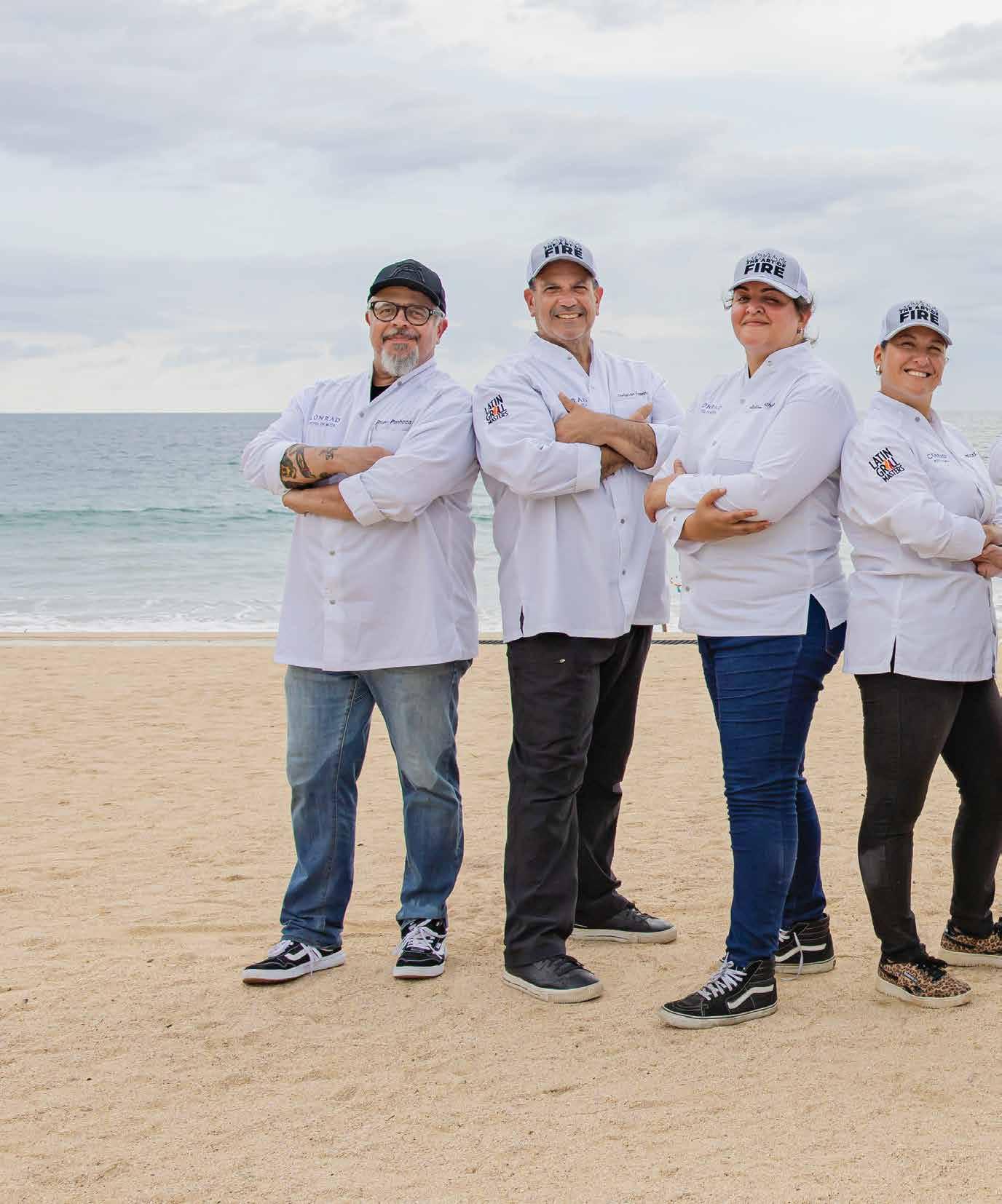


by
A trip to Mexico offers a journey through authentic Latin American fare.

Photo by Beam Photography
By Nakayla Shakespeare
Atrip to Punta Mita, Mexico, was a sun-kissed fusion of food, fun and cultural exploration. Over five days, my sister and I embarked on a culinary journey that told stories of tradition and innovation within Latin American cuisine, all while soaking in the tropical surroundings. I left with great memories, a sunburn and a newfound appreciation for the art of Latin cooking.
After flying into Puerto Vallarta, we took a 45-minute shuttle to the luxury resort, Conrad Punta de Mita, where a refreshing welcome cocktail awaited us. The breezeway-style lobby offered a lush lawn view, followed by turquoise ocean waters stretching beyond the horizon.
The occasion for this much-needed vacation was the Latin Grill Masters, a week-long celebration of the flavors of Argentina, Chile, Peru, Brazil and Mexico. Eight highly acclaimed chefs came together to showcase their talents and share the joy of Latin cooking. From traditional asado to bold Amazonian spices, each chef exhibited signature grilling techniques, offering an authentic taste of their homeland along the shores of Riviera Nayarit.
When I spoke to Chef Christian Guarrina, he gave me a preview of what I could expect in the coming days. “You are going to experience a lot of options of food that have tons of flavor,” he says.
After a brisk beach walk along the resort’s two-mile shoreline, I returned to my room to prepare for dinner at Conrad’s fine-dining restaurant, Codex. This outdoor bungalow-style restaurant is secluded in the locale’s lush flora. Its menu embodies Mexico’s flavors and heritage by blending regional traditions with modern techniques.
As soon as I sat down, my eyes fixed on the calm swell of the waves, which were just steps away. A gentle storm began to hit, with the continuous patter of raindrops tapping the roof accompanied by the sound of waves and occasional thunder, creating what I like to call “nature’s symphony.” It was peaceful and beautiful.
The prix fixe menu was formulated by Latin Grill Master and Chef Bruno Panhoca, a Brazilian pitmaster and churrasco expert who has mastered the art of open-fire grilling.
His first dish was a fish tostada, a light bite of marinated seaweed, habanero yuzu kosho, pickled onions and chili vinegar gel. It was the perfect way to start the meal; the mellow, mild fish flavor balanced the savory and tart flavor profiles.
The tostada was followed by Yakiniku, a plate featuring wagyu, oyster barbecue sauce, wasabi and crispy kale. The wagyu melted in my mouth while the barbecue sauce and wasabi ignited my taste buds.
My favorite dish of the night showcased the chef’s creativity and the impressive range of flavors he achieved through a single ingredient– the tomato. Chef Panhoca cleverly crafted a tomato gyoza by stuffing an


heirloom tomato with tomato tartare, basil, scallions and consommé, then thinly slicing and shaping it into a gyoza. It burst with light and refreshing flavor, leaving me wanting more.
The next dish was smoked duck in a jabuticaba broth, accompanied by orange risotto and thyme. This was followed by a rib-eye skewer with corn farofa and a pepper vinaigrette. We finished the meal with a refreshing dessert called the Tropical Cassava, a cassava sphere with banana, passion fruit and mango.
The next day, we woke up early to walk the beachline. The calm waves brushed against our feet before receding into the ocean. After our stroll, we enjoyed a breakfast buffet at Arbol, the restaurant adjacent to the lobby.
Before fully committing to the day’s exciting festivities, I took a moment to unwind at the Conrad Spa, a luxury wellness sanctuary rooted in ancient Huichol culture. Numerous treatment options are available, including an outdoor massage in a stunning thatched dome room. You can also connect with ancient culture in the Temacal (house of heat) and embark on a spiritual journey through heat and steam to detoxify the body.
It was time for a facial after enjoying the spa’s cold plunge and pool amenities. I opted for a customized treatment to energize, hydrate and smooth my skin. The experience was relaxing and left me glowing.
I met my sister at the beachside bar for a frozen margarita, and we made our way to the Aura Pool, an adults-only pool with a swim-up
by Beam Photography
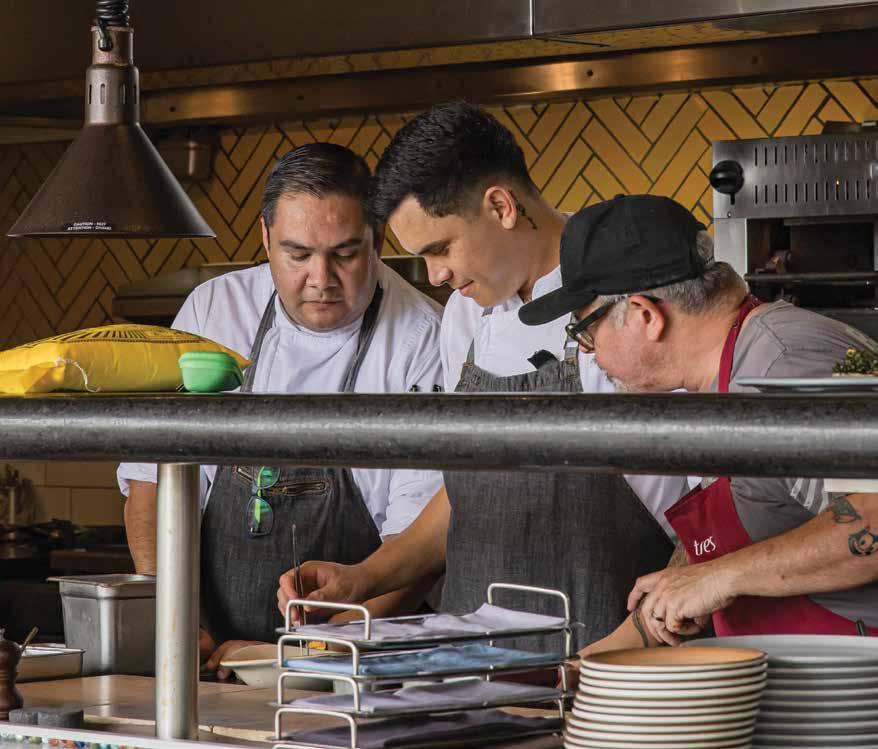



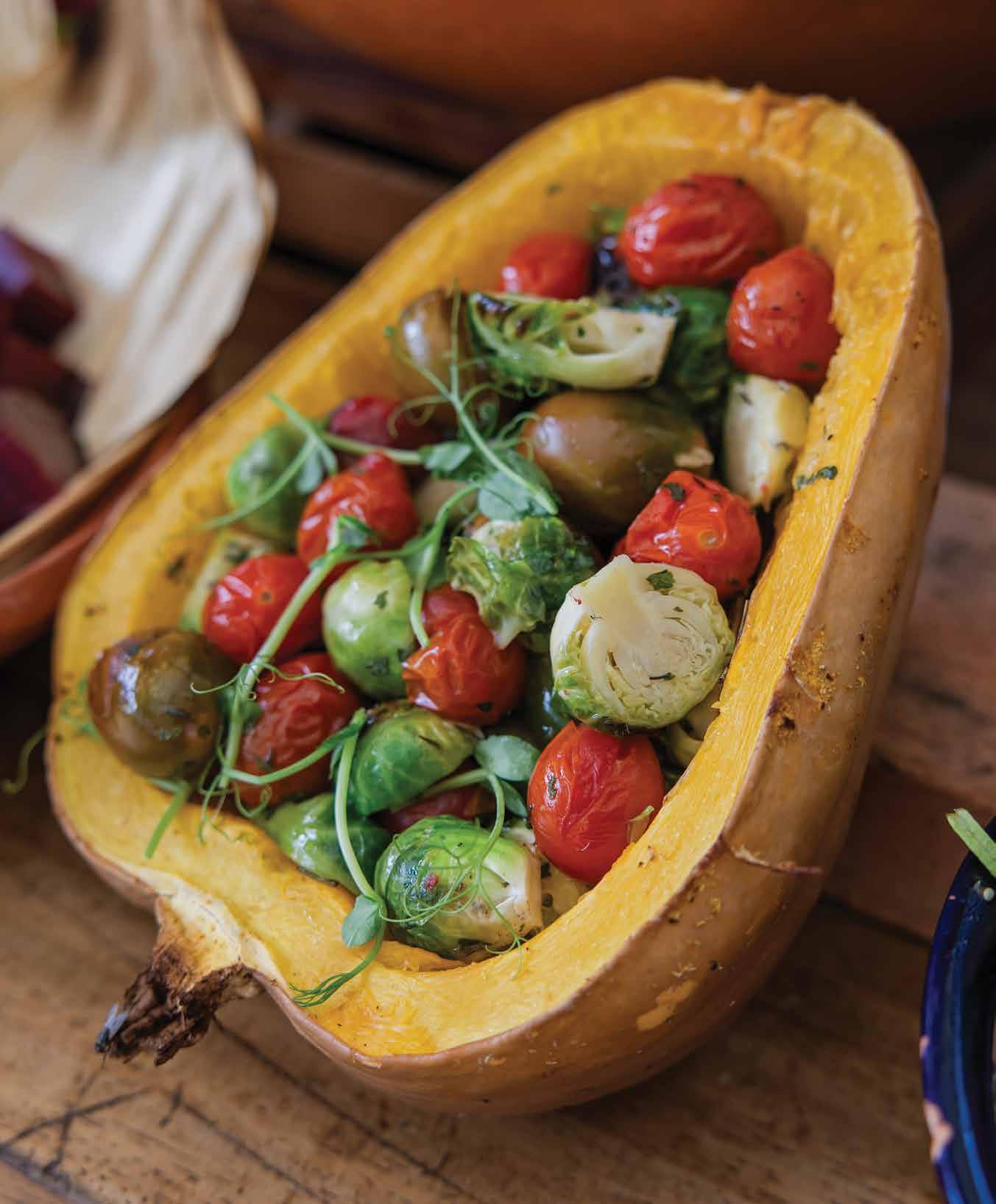
Photos by Beam Photography
bar and a beautiful wood-decked lounge area. This is where our next culinary experience took place. Each of the chefs had a station where they reimagined a Mexican classic—the taco—infusing it with their unique techniques and cultural influences for an extraordinary culinary showcase.
I ate as much as my stomach would allow. The unique flavor pairings took my taste buds through Latin American culture. My favorites were Chef Juan Ozaki’s pork belly taco, Chef Guillermo Busquiazo’s octopus taco, and Chef Guarrina’s skirt steak taco. Each one told a story about the chef and their heritage, making this experience remarkable.
Later that evening, we participated in a grilling class, where chefs Fran Cortes and Juliana Machado guided us through some of the many dishes that can be cooked on a grill and the flavors that come from it. My favorite was grilled pumpkin; its consistency was buttery and soft, with a bold taste.
Saturday morning was the morning of the grand feast, which would take place that evening, so my sister and I had a light breakfast and spent time in the ocean, playfully jumping the waves as they approached the shore and swimming in the turquoise waters.
When we walked into the lobby for the feast, I was surprised to see a community of chefs cooking and grilling a vast variety of foods. The aromas made my mouth water. Every chef united to showcase food that is representative of their home countries and culinary expertise. There were enough food options to feed the resort, from brisket to grilled octopus, paella, oysters and meats of every kind— it was a foodie’s dream. While I wasn’t able to try all of it, I can confidently say everything I did have was absolutely delicious. All the chefs successfully showcased their talents through their dishes.
On our last day, we savored the breathtaking views of the coast while relaxing poolside. We had dinner at Codex; this time, it was a tailored menu created by Chef Ozaki. His fare was designed to showcase a fusion of Peruvian cuisine (where he lives) and Japanese cuisine (where his heritage originates).
The menu translated this fusion effortlessly, offering unexpected pairings such as the Antikunigiri, where the chef paired a ribeye with rice and anticuchera sauce in a nigiri style, and the Taco Tacu, featuring fried octopus on a bed of rice and bean molote.
My favorite part of the dining experience was when the chef brought out a massive tuna on a rolling table. He described the parts of the fish that are most commonly used and proceeded to cut slices of raw tuna for us to enjoy. It’s safe to say it was the freshest tuna I have ever had, a true ocean-to-table experience.
I left Mexico feeling blessed to have had the opportunity to participate in an educational and food-filled week. Through its cuisine, I learned much about Latin culture and matured my palate to understand better and appreciate the unique flavor combinations. My stomach was full, and my heart even fuller.




At the Agua Caliente Cultural Museum Store, thoughtfully selected items reveal a moment of Native tradition and perspective.
By Lisa Marie Hart
Photography by Ethan Kaminsky
Peering through the glass entry doors leading into the Agua Caliente Cultural Museum, the vivid colors of hand-woven textiles come into view. Crisp patterns draw the eye, rousing curiosity. Nearby, an earthen clay olla enjoys an elevated place of honor and a leather pouch adorned in tiny beads shows the patience and skills of its maker.
These objects of beauty and significance appear in the Agua Caliente Cultural Museum Store. They are some of the masterfully handcrafted items by Agua Caliente Tribal Members and Native Americans from around the country. In all, the Museum Store celebrates more than 160 artists and businesses who share their work and their Native American perspectives.
Located off the lobby, the Museum Store welcomes visitors during regular hours, no admission ticket necessary. All are welcome to enjoy.
Since time immemorial, the Agua Caliente Band of Cahuilla Indians and tribes across the country have passed down their techniques to artfully create functional objects with symbolic designs, patterns and materials.
“The Museum Store helps continue the education that begins in the Museum,” says Manager of Retail and Visitor Services Kelli Davis, who has been behind the scenes since 2021, researching and nurturing
connections to procure the Museum Store’s exquisite inventory.
Some visitors to the Museum Store browse for themselves while others seek a special present for a friend or family member and find a treasure to call their own. As a collection, the offerings bubble over with unexpected ideas for birthdays, anniversaries, lifetime milestones and the holiday season.

Davis infuses a multigenerational approach to her selections, thoughtfully bridging the gap between the museum experience and the take-home component of the museum store for all ages. Though products fashioned by hand can prove challenging to source for little ones, the kids’ section is stocked with Native American–authored books, durable small dolls and children’s jewelry.
As items and their stories head home with shoppers, new ones arrive to take their places. The handmade nature of many goods, paired with Davis’s eye for fresh finds, means you can possibly stroll through a different store on every visit. Her intentional replenishing ensures that Native American voices, including modern points of view, are continually shared in artful fashion.
“We are always reaching out to new artists and artisans,” Davis says, as the Museum Store continues to grow its representation from the Agua Caliente Band of Cahuilla Indians as well as other tribes from Southern California and beyond.













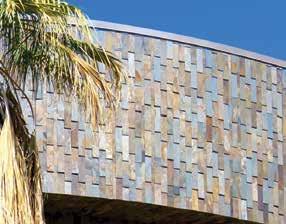















































































































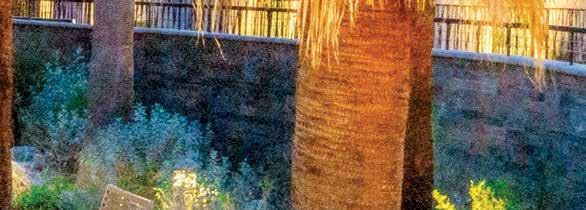





















A top destination on Europe’s Atlantic coast, Portugal is ideal for vacations or making it your new home.
By David Rubin

Welcome to Portugal, a country that is a blend of old and new Europe. With its rich history, vibrant culture and stunning landscapes, Portugal is where tradition and contemporary life blend seamlessly. From the Douro Valley to the Algarve coast, you will find a mix of rugged coastlines, historic sites and modern style.
Portugal’s popularity has grown among expats, digital nomads and retirees from the U.S., Brazil and other European countries. If I were considering living in Europe, I would consider Portugal a viable option. The country’s mild climate, beautiful beaches, relaxed lifestyle, moderate cost of living, favorable tax and visa programs and welcoming attitude towards foreigners are major draws. Portugal tends to be an accepting and laid-back society, where people can live and express themselves freely.
Whether you’re looking to slow down or explore new cultures, Portugal’s diverse regions—from cities to coastal towns—offer something for everyone. Additionally, DavidTravel has great local experts and friends who can connect you with others in Portugal and worldwide.
Porto is a lovely city offering a relaxed atmosphere, excellent cuisine and affordable living. Many are moving here from all over the world. Its center is a maze of narrow streets, charming alleys and impressive architecture, with the ICONIC Luís I Bridge offering breathtaking views of the Douro River.
São Bento Station, one of the city’s main train stations with historic tilework, has become a fun culinary and wine bar hangout. It features the Time Out Market and a wide range of Portuguese cuisine by top chefs. Be sure to try some of Porto’s famous dishes, such as bacalhau à brás and francesinha.
The city’s nightlife is another major draw, with many bars, clubs and live music venues to explore. Porto is also renowned for its rich history and cultural heritage, boasting many museums and historical sites, including the Porto Cathedral and the Church of São Francisco.
The Douro Valley is a majestic region that stretches as far as the eye can see. Rolling hills, vineyards and picturesque villages make it a haven for nature lovers and wine enthusiasts. Stay at the luxurious Six Senses Hotel Douro Valley to enjoy spa treatments, fine cuisine and being pampered. Visit some of the region’s renowned vineyards to indulge in wine and olive oil tastings. Take an afternoon scenic boat tour along the Douro River and hike through the stunning hillside. The Douro Valley is also home to many villages, such as Peso da Régua and Lamego, offering a glimpse into traditional Portuguese life.
NOTE: It’s about a two-hour drive from Porto to the Douro Valley.


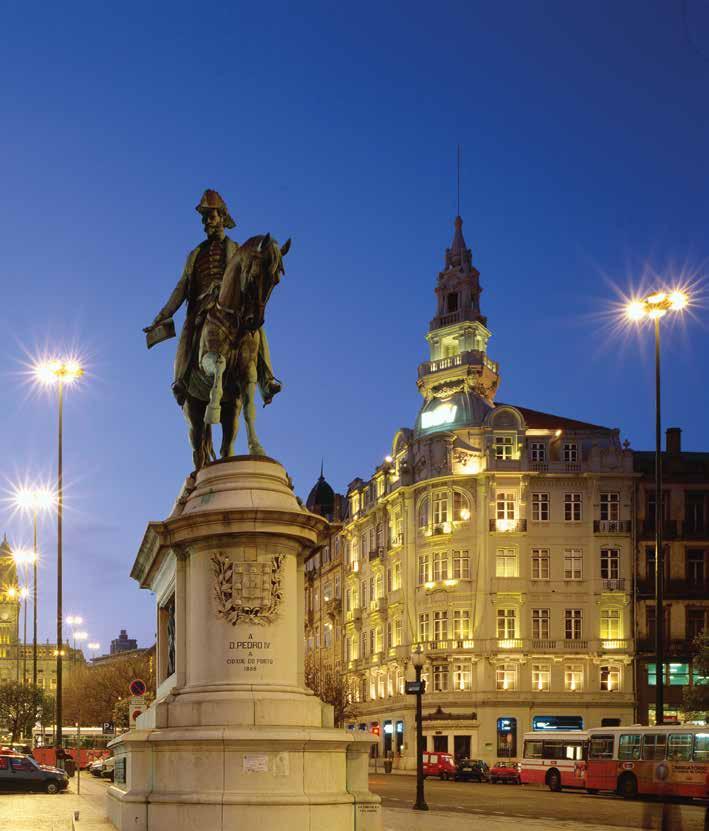





Coimbra is a fun and energetic city. It is also home to the University of Coimbra, one of Europe’s oldest universities, founded in 1290 and designated a UNESCO World Heritage Site. With its student population, the city offers a unique blend of academic and cultural activities, making it an ideal place to experience Portugal’s youthful energy and enjoy its vibrant nightlife. Explore streets, old buildings and the dramatic Biblioteca Joanina, a magnificent Baroque library built in the 18th century.
A popular destination for families to relax and learn about Portuguese culture and history is at the theme park, Portugal dos Pequenitos. Conceived in 1938 by Fernando Bissaya Barreto and designed by Cassiano Branco, it features a miniature representation of Portugal’s monuments and buildings. Explore the gardens, snap photos with the tiny buildings and enjoy the park.
NOTE: It’s about an hour’s drive from Porto to Coimbra.
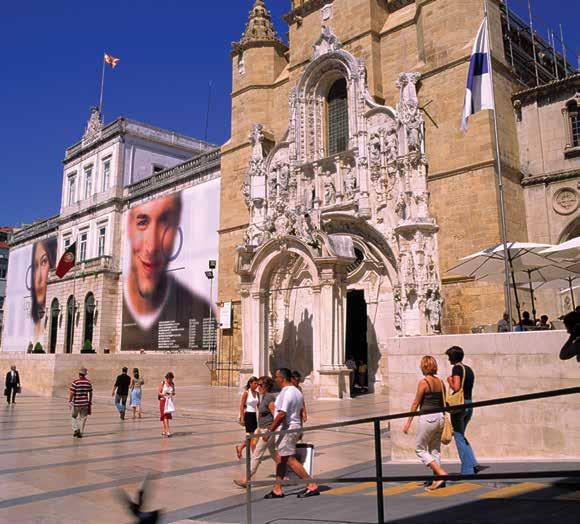
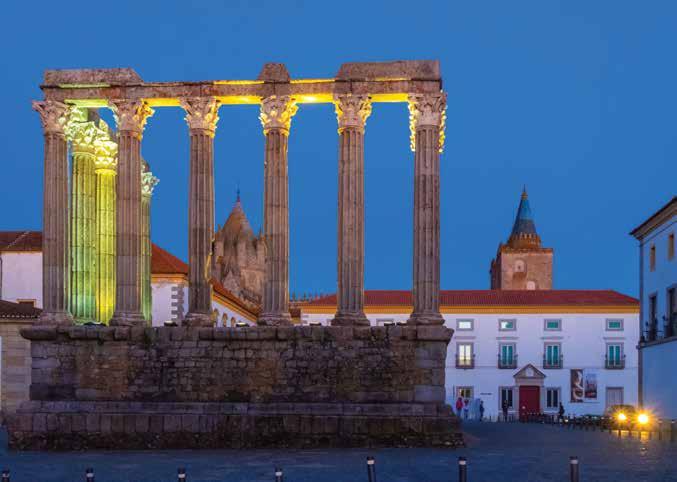
Évora is a captivating city that will transport you back in time. Wander through the narrow streets of the city’s center—a UNESCO World Heritage Site—and discover the Roman ruins, Gothic architecture, the macabre Chapel of Bones, and the Cromeleque dos Almendres, a mysterious megalithic site. Visit the Évora Museum, a treasure trove of art, history and culture housed in a 16th-century archbishop’s palace adjacent to the Évora Cathedral.
The museum showcases more than 20,000 pieces, including Roman sculptures, Visigothic and medieval artifacts, Episcopal furnishings and Portuguese and Flemish paintings. One of the museum’s highlights is the “Life of the Virgin” series, a 13-panel retable depicting the life of the Virgin Mary, created by unknown artists from the Bruges School in the mid-15th century.
NOTE: It’s about a 2.5-hour drive from Coimbra to Évora.
A “Best of the Best” recommended itinerary (The duration of your stay and itinerary can be customized to fit your timeline and preferences):
1. 4-6 nights in Porto at InterContinental Hotel PortoPalacio das Cardosas, Hospes Infante Sagres Porto, Hotel NH Collection Porto Batalha, Maison Albar - Le Monumental Palace, Pestana Palacio do Freixo, Torel 1884 Suites, Apartments or Torel Palace Porto
2. 3-4 nights in the Douro Valley at Octant Hotels Douro or Six Senses Douro Valley
3. 2-3 nights in Coimbra at Quinta das Lagrimas
4. 2-3 nights in Evora at Convento do Espinheiro or Pousada Convento de Evora
5. 2-3 nights in Arrabida at Hotel Casa Palmela
6. 3-4 nights in the Comporta area at AlmaLusa Comporta, Quinta Da Comporta, Sublime Comporta or Vermelho by Christian Louboutin in Melides
7. 4-6 nights in Lisbon AlmaLusa Alfama, AlmaLusa Baixa – Chiado at Bairro Alto Hotel, Four Seasons Hotel Ritz Lisbon, H10 Duque de Loule, Olissippo Lapa Palace, Palácio Ludovice or The One Palácio da Anunciada
8. 3-6 nights in the Algarve region at Bela Vista Hotel & Spa, Conrad Algarve, Pine Cliffs Resort, Tivoli Marina Vilamoura Algarve Resort, Viceroy at Ombria Algarve, Vila Joya, Vila Vita Parc or W Algarve

The Arrábida Natural Park is a nature lover’s paradise, featuring crystal-clear waters, golden beaches and lush forests. The park includes a mix of terrestrial and marine ecosystems with cliffs, beaches, forests and scrublands. Take a boat tour to explore the park’s wild coastline, snorkel in the protected marine reserve, or hike the scenic trails. Do not miss the ICONIC Portinho da Arrábida, a lovely beach nestled among towering cliffs. Other great beaches include Galapos and Praia da Figueirinha.
NOTE: It’s about a 1.5-hour drive from Évora to Arrábida.
Comporta has become a chic destination, attracting visitors with its pristine beaches, luxury resorts and laid-back atmosphere. The Vermelho Hotel by Christian Louboutin in Melides is a standout, showcasing a design-centric approach with stylish accommodations and a unique aesthetic.
Relax in style and take in the city’s serene surroundings. Enjoy a boat tour or kayak through the Sado Estuary and spot dolphins and other marine life. Comporta is also known for its vibrant art scene, featuring numerous galleries and studios showcasing local artists’ work.
NOTE: It’s about a one-hour drive from Arrábida to Comporta.

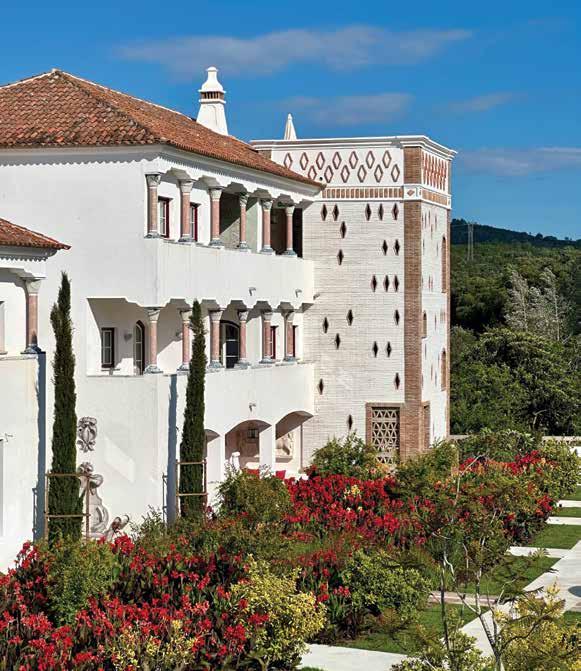

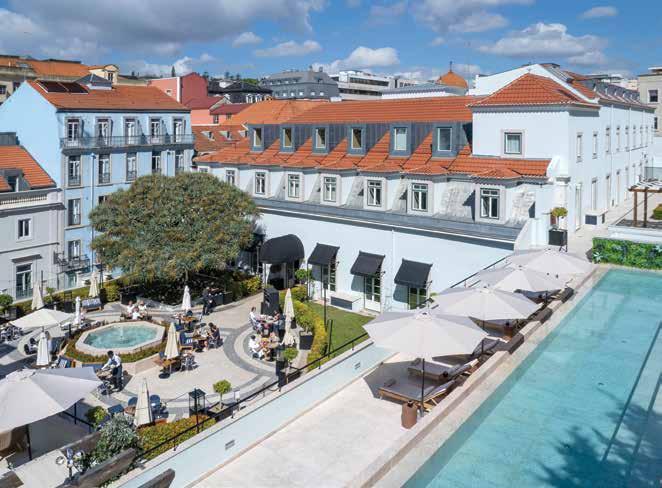


Lisbon is Portugal’s capital and largest city and is the country’s primary cultural, economic and political hub. It’s a city of grandeur and heritage that is alive with activity and vitality. Lisbon is home to many historical landmarks, museums and cultural institutions, blending the past and present through its historic neighborhoods, picturesque alleys and architecture. With its mild climate, coastal location and affordable cost of living, Lisbon is an attractive destination for travelers, and many are moving here, as well.
Explore the city’s architecture, including the Jeronimos Monastery and the Castle of São Jorge. Take a ride on the historic Tram 28 and visit the quaint, cobblestone streets of the old Alfama neighborhood, where Fado music and shops await discovery. The surrounding region also offers many exciting day-trip options, including the fairytale-like town of Sintra, with its palaces and castles. Plus, an easy 35 to 45-minute commuter train will take you to Cascais and Estoril’s lovely coastal beach towns.


A donation to the Portuguese Association for Victim Support (APAV) supports programs to assist victims of crime and violence. Founded in 1990, this non-profit organization provides confidential, qualified and free support services to victims throughout Portugal, including victims of gender and domestic violence. Its CARE program offers specialized support for child victims of sexual violence. APAV’s teams consist of volunteers and counselors who provide victims with information, support and guidance. The programs also promote skills for establishing positive relationships based on equality, non-violence and respect.

Donate today at apav.pt

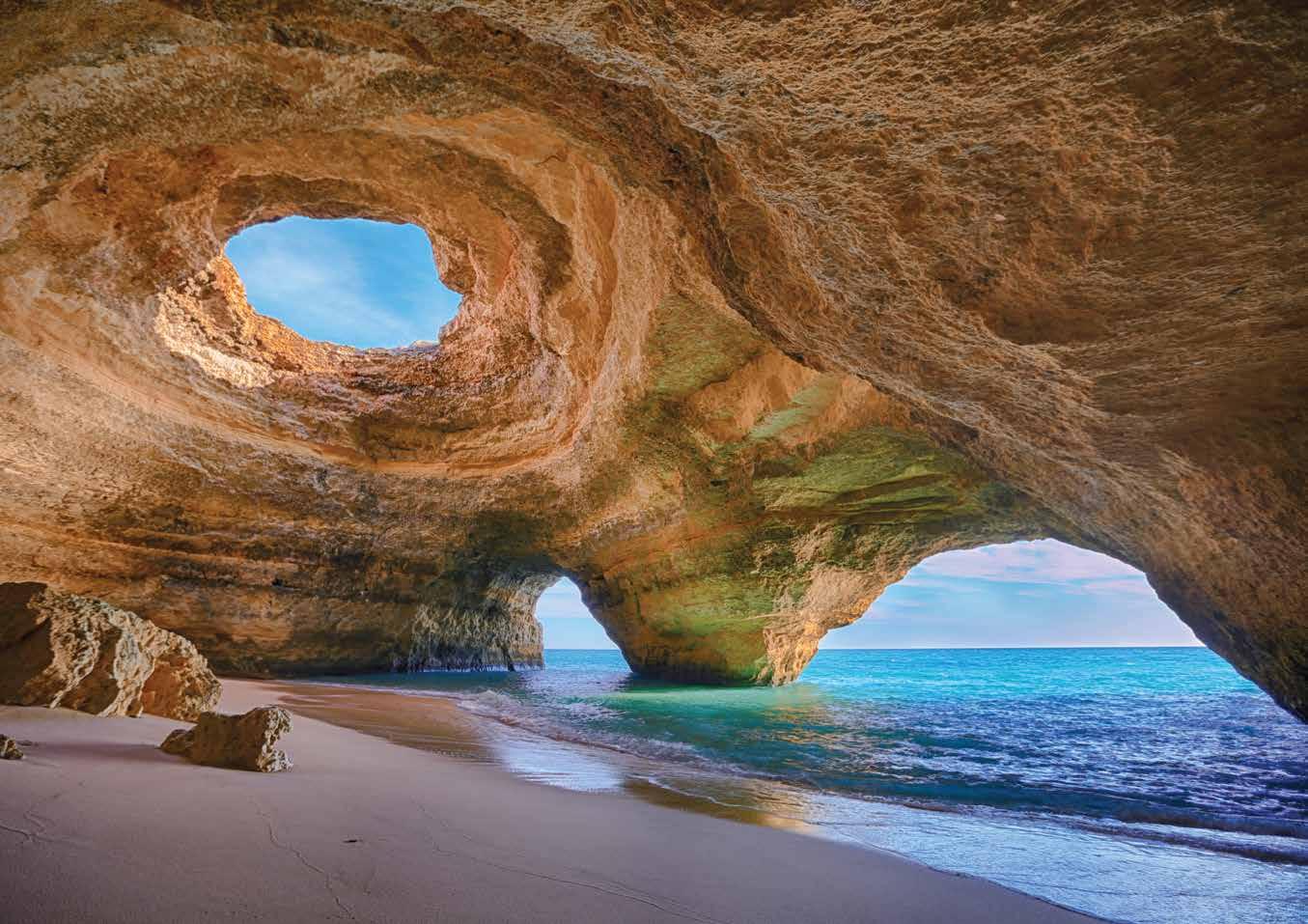

When seeking to complete your journey with relaxing beach time, consider including the Algarve. The Algarve region is a paradise of sun and sea with dramatic rock formations, golden beaches and turquoise waters. For years, it has been a popular retirement destination, especially for Europeans.
Take a boat tour or hike the trails and marvel at the views. Visit the historic town of Sagres, known for its rich maritime history and breathtaking natural beauty. The town boasts steep cliffs, excellent beaches and a windswept fortress, built by Prince Henry the Navigator in the 15th century.
NOTE: It’s about a three-hour drive from Lisbon to the Algarve.


As you bid farewell to Portugal, the memories of its sun-kissed landscapes, rich history and warm hospitality will linger. The rhythms of Fado music, the flavors of traditional cuisine and the beauty of its architecture will stay with you, a testament to the country’s enduring charm and allure.
To book your business and leisure travels worldwide, call on David Rubin and his team at DavidTravel. In 1996, David moved from a successful law practice, followed a deep passion for travel, and launched his travel company. For more than two decades, David has been on both the Travel + Leisure Magazine “A-List” and the Conde Nast Traveler Magazine “Specialist List” of the best travel advisors in the world. DavidTravel delivers unparalleled style, attention to detail and insider access, uniquely responding to each client’s goals, budget, interests and dreams. Request@DavidTravel.com. www.DavidTravel.com.





The alluring beauty of stained glass and its centuries-old history.
By Amalie Rhebeck
Casting shadows and iridescent light, stained-glass artistry is a detailed expression of emotion, color and, most importantly– storytelling. Although the earliest origins of this art are unclear, with some sources attributing its creation to the ancient Egyptians and Romans, who were known for using colored-glass to create hued vases and intricate beads, the earliest stained-glass window panes appeared in European churches in the Early Middle Ages.
Arguably most associated with the opulence and splendor of gothic cathedral architecture, stained glass in the Middle Ages offered picturesque and spiritual lessons for all who visited them. Even today, thousands of people flock to famous cathedrals, such as Notre Dame and Chartres Cathedral, to marvel at the towering architecture and intricate stained glass.
Considered a unique blend of symbolism and artistic expression, the delicacies of making stained glass in the Early Middle Ages required precision and unparalleled attention to detail. Starting with coloring the molten glass and then creating a full-scale outline of the piece, artists had to have an eye for detail. Through the painstaking process of cutting the glass, adding a design and assembling all the panes, they were able to create masterpieces that are still marveled at today.
Whether nestled in the walls of sacred cathedrals from centuries past or created through modern inspiration, stained glass invites viewers to experience the breathtaking beauty of fine art and the elaborate allure of storytelling.
by




